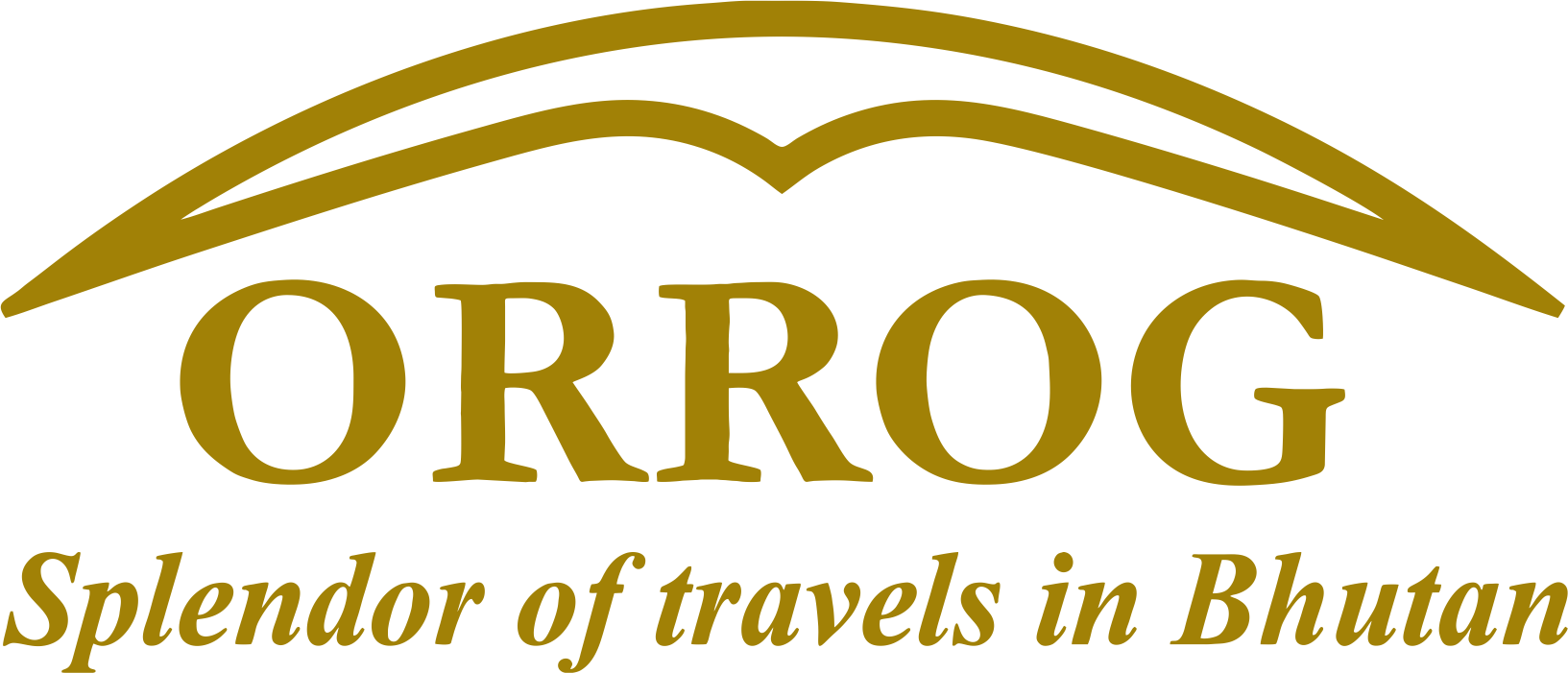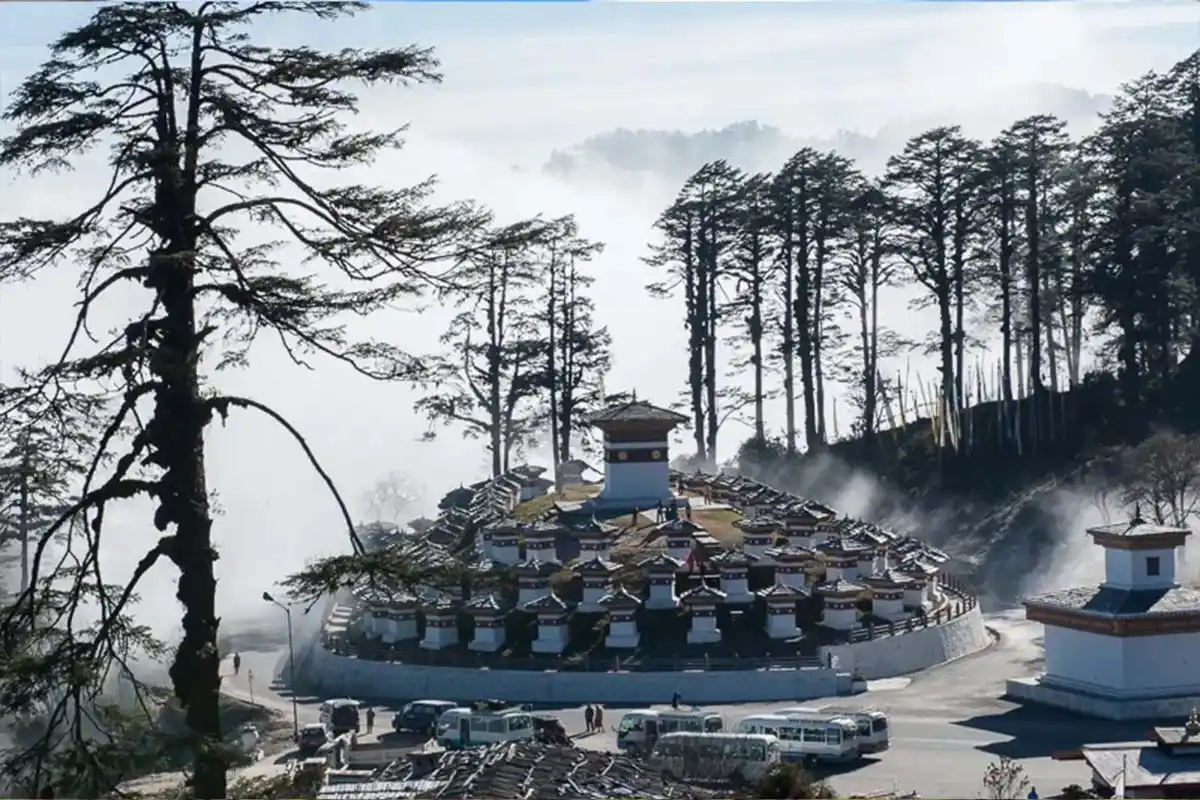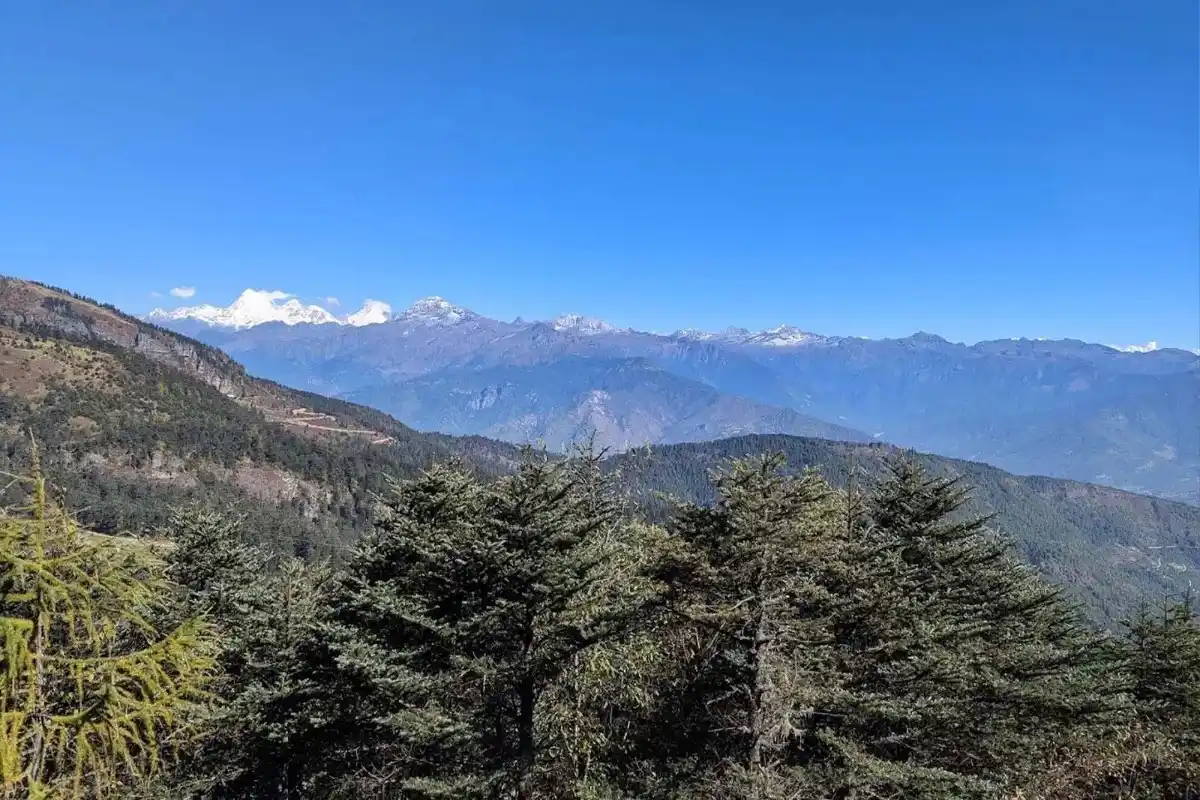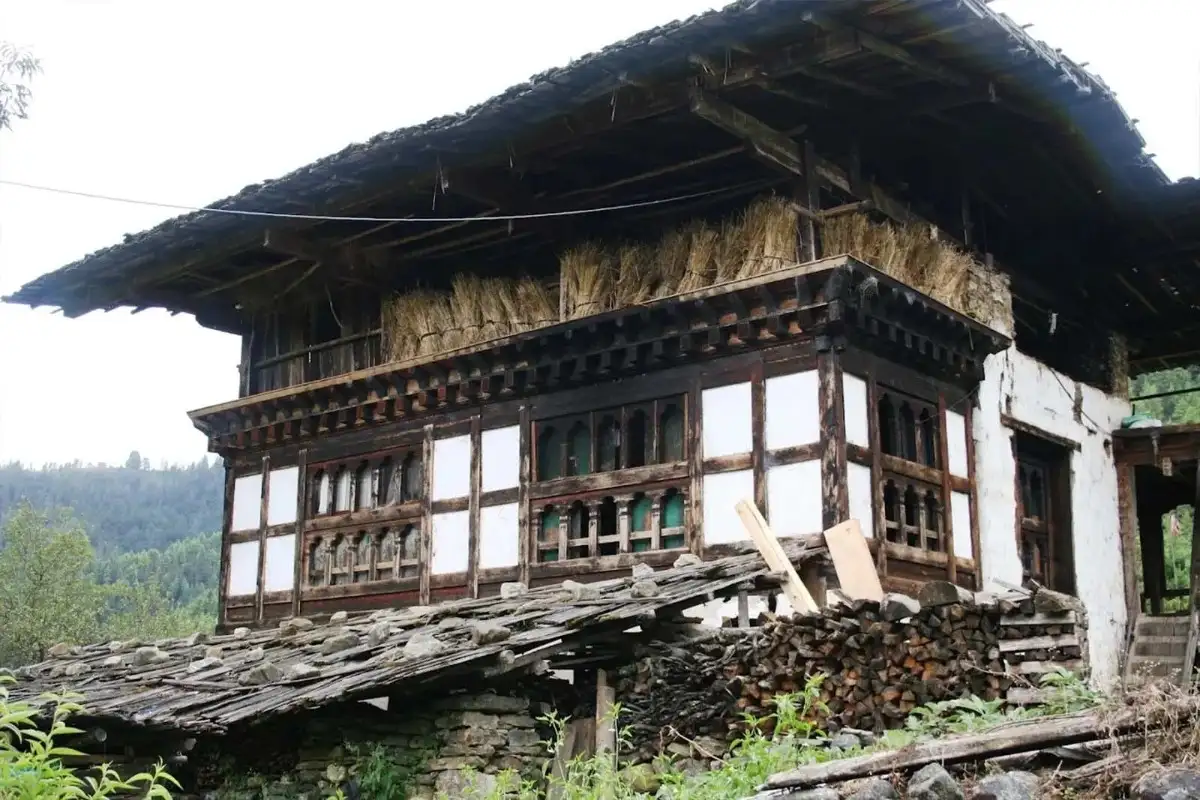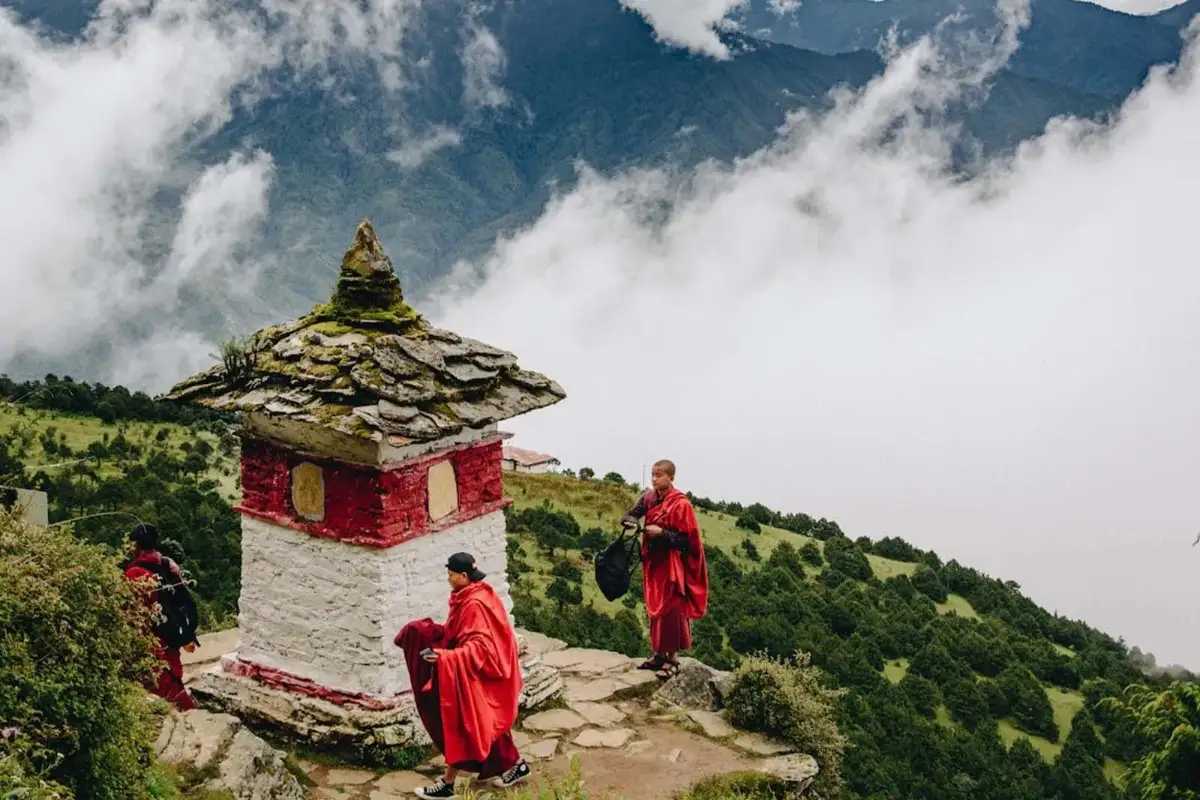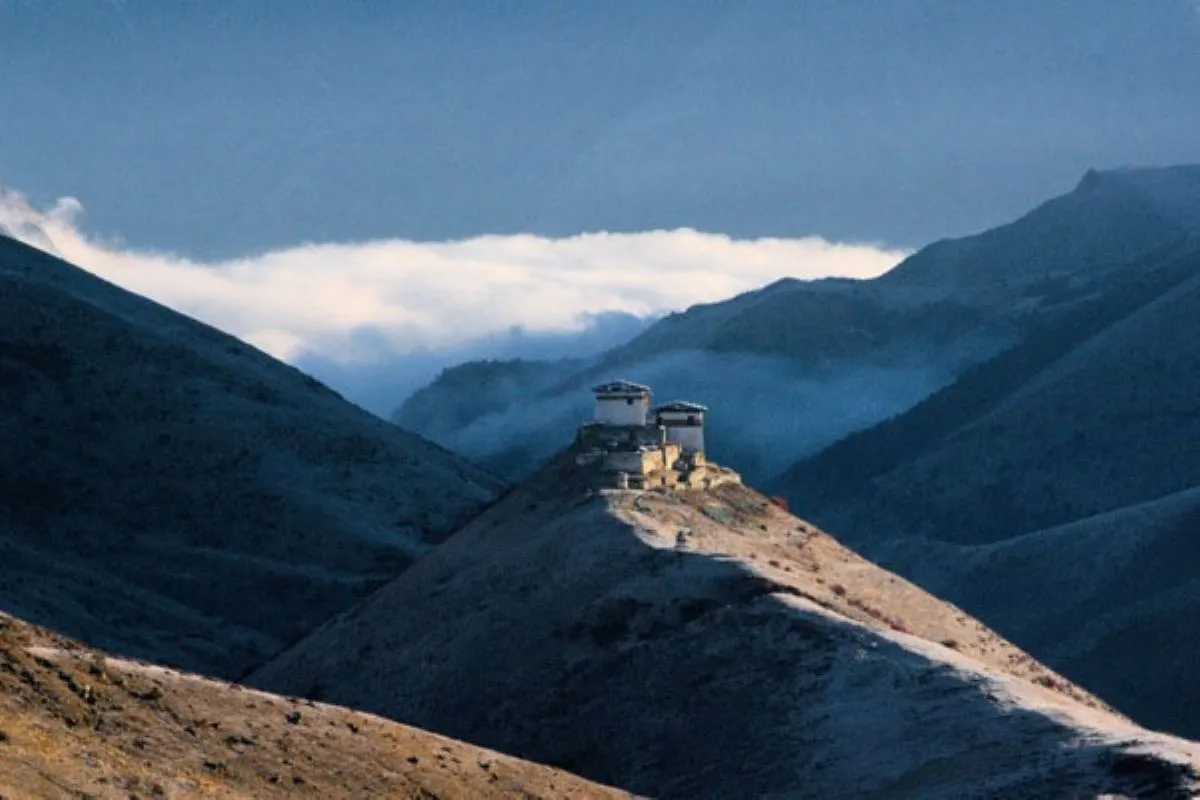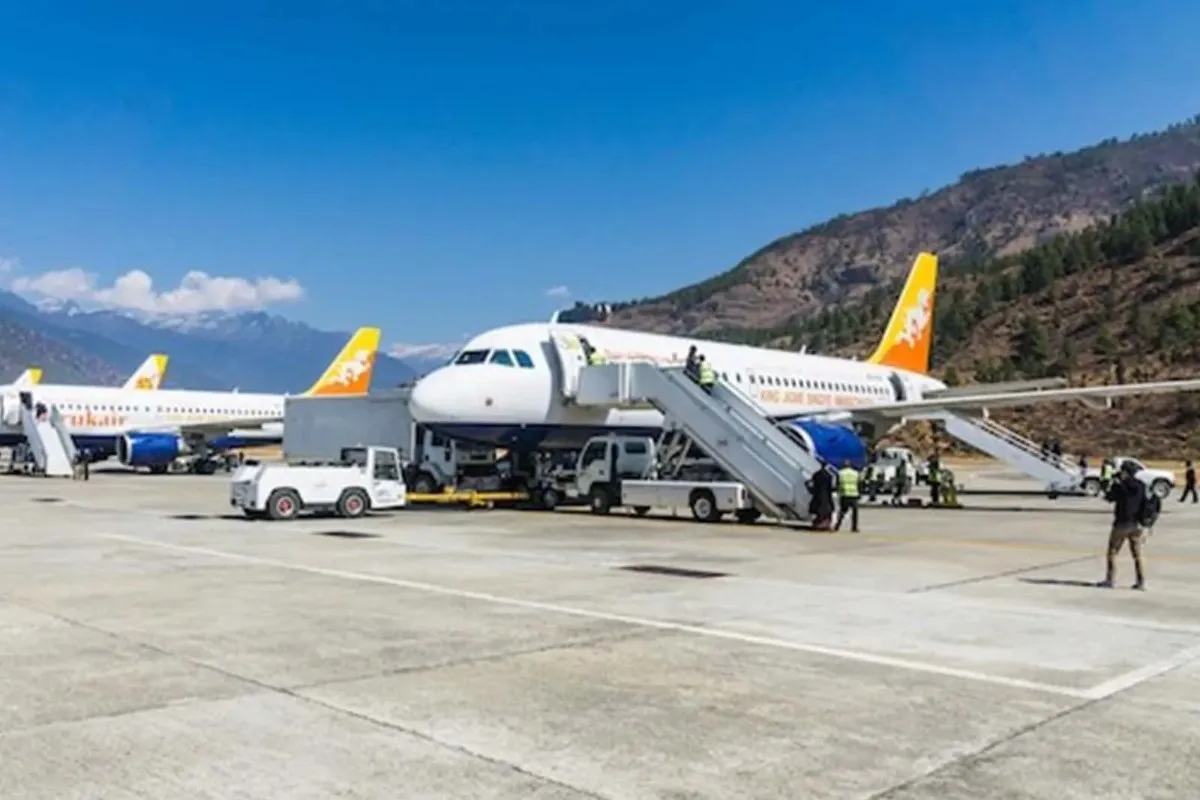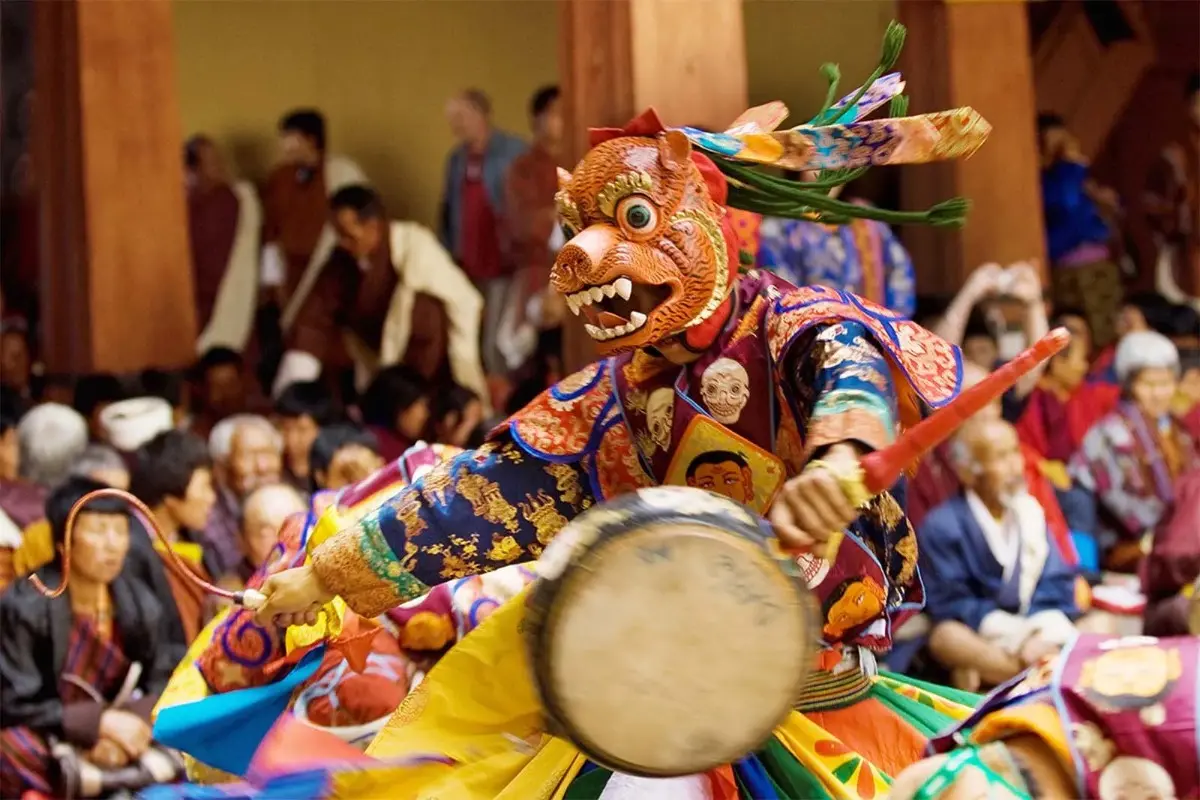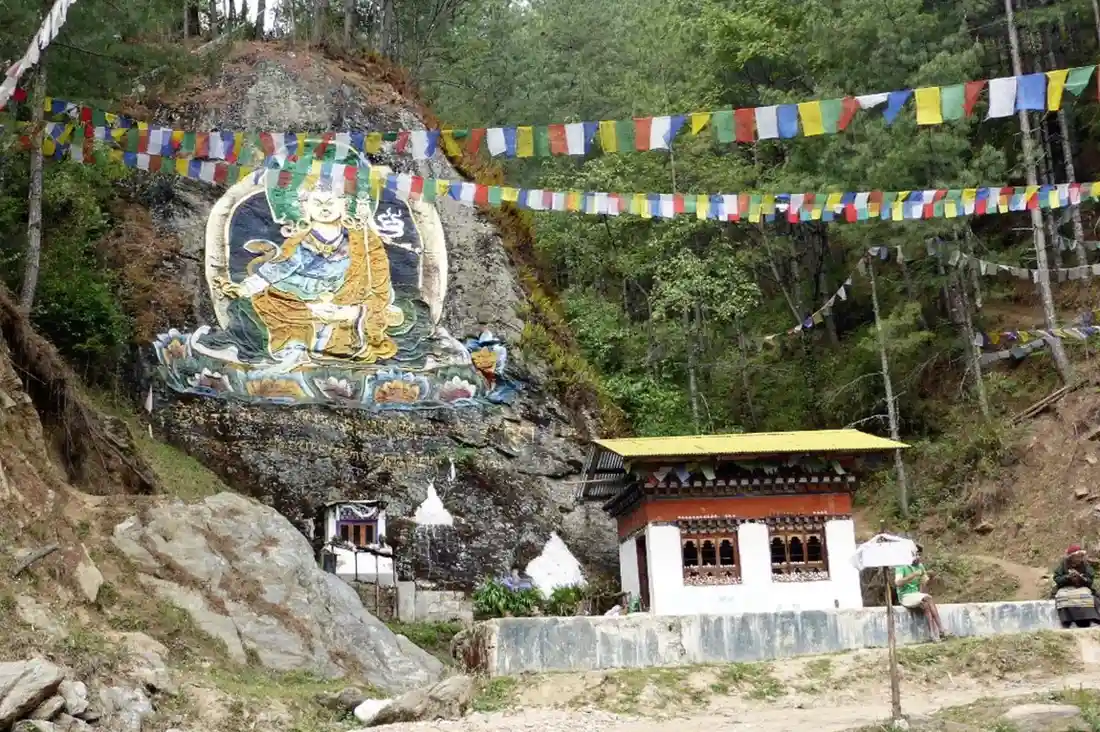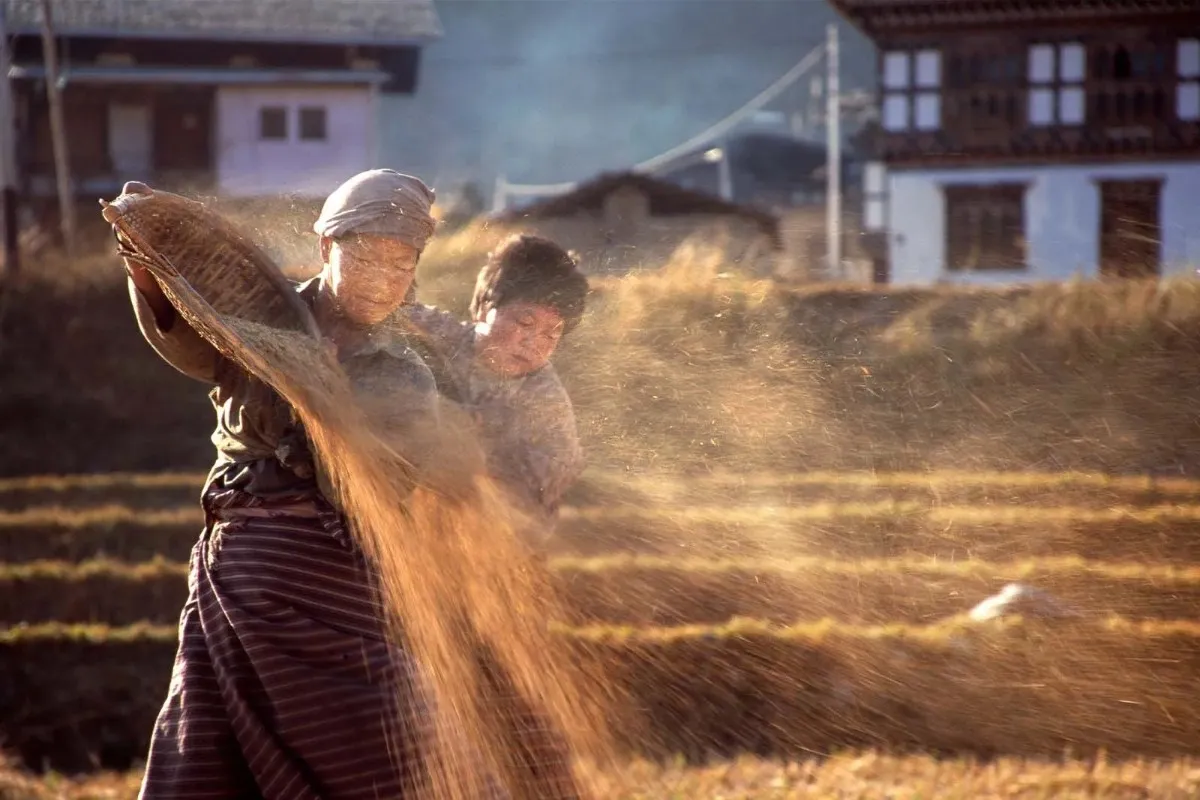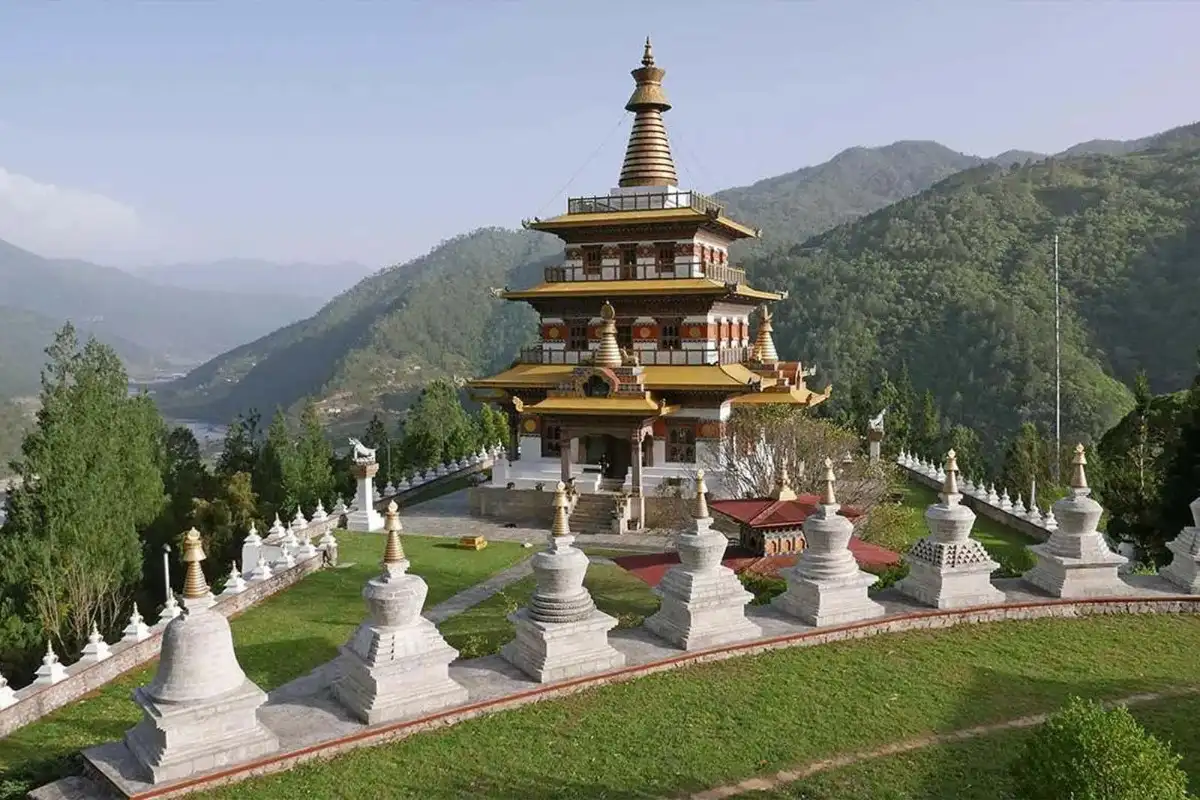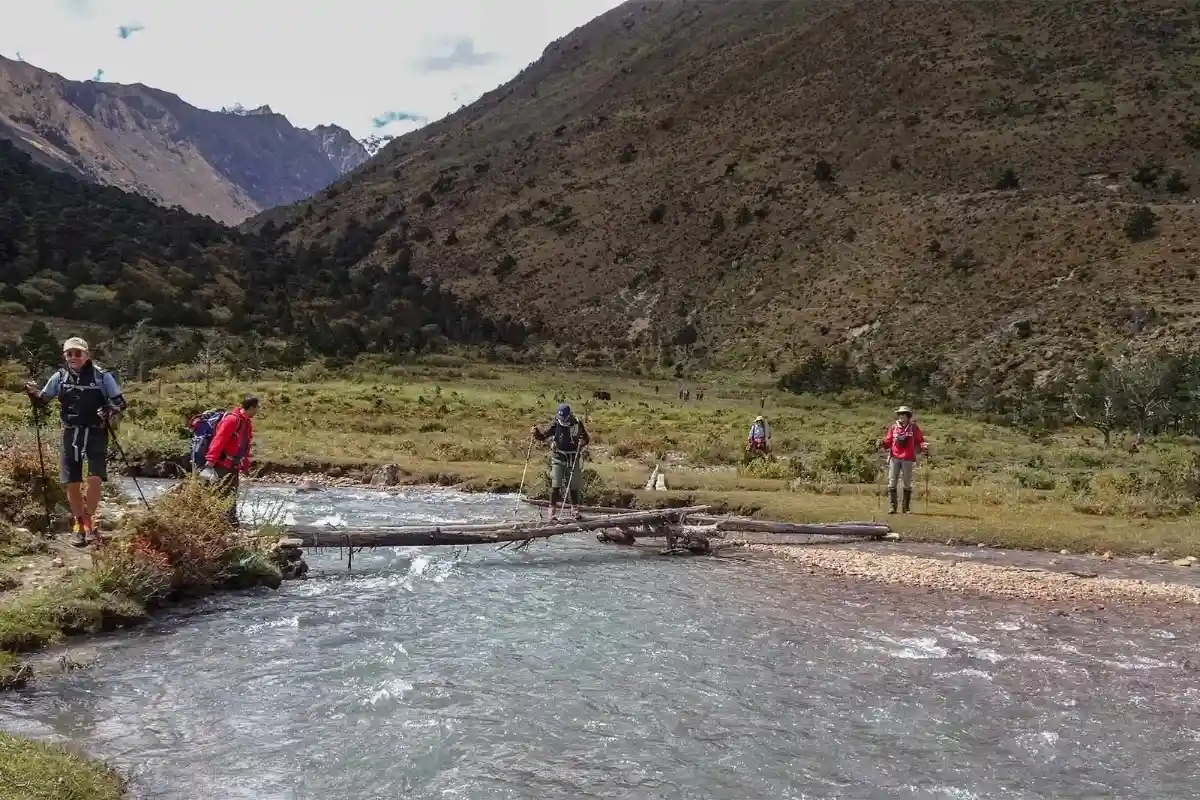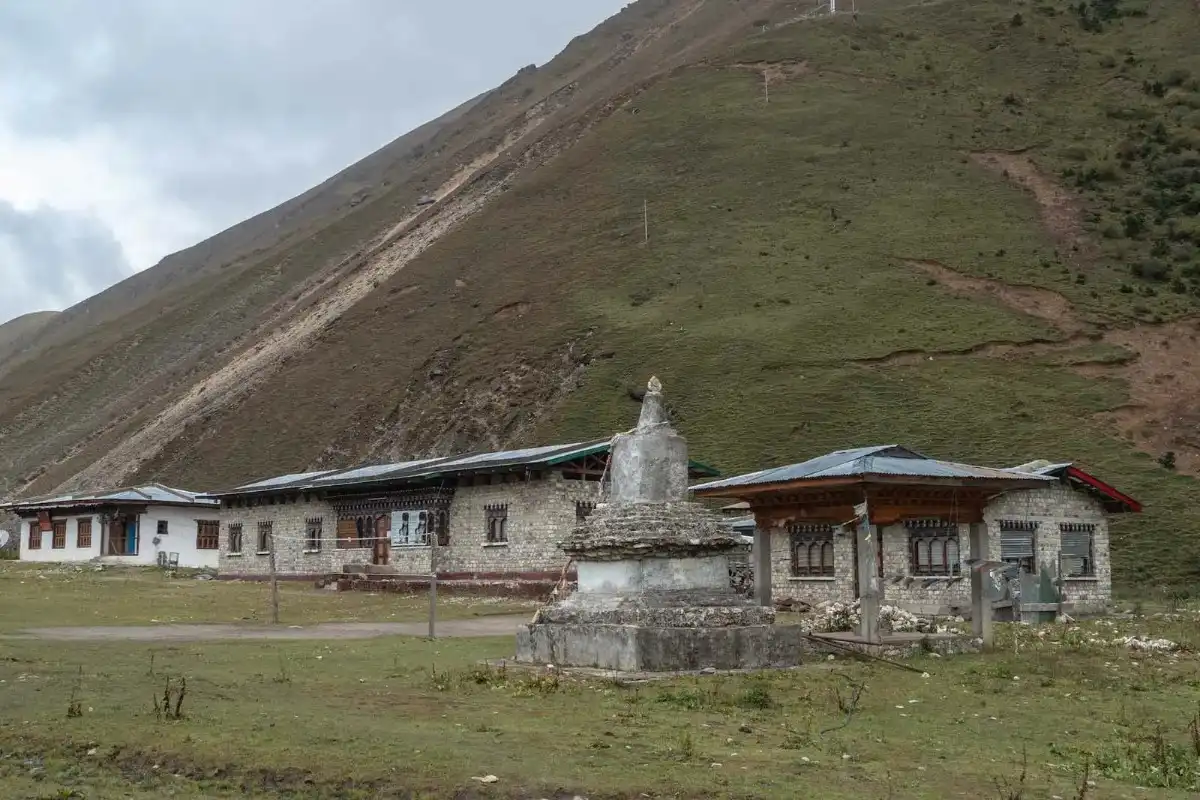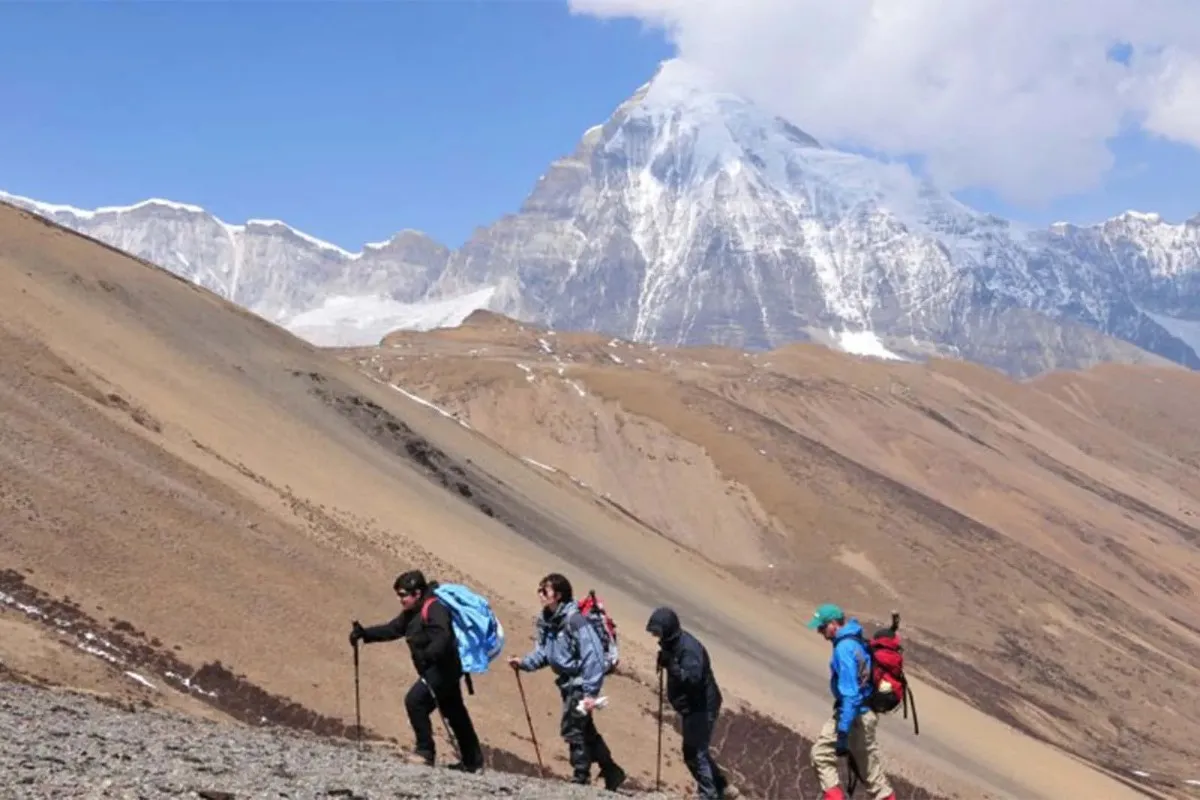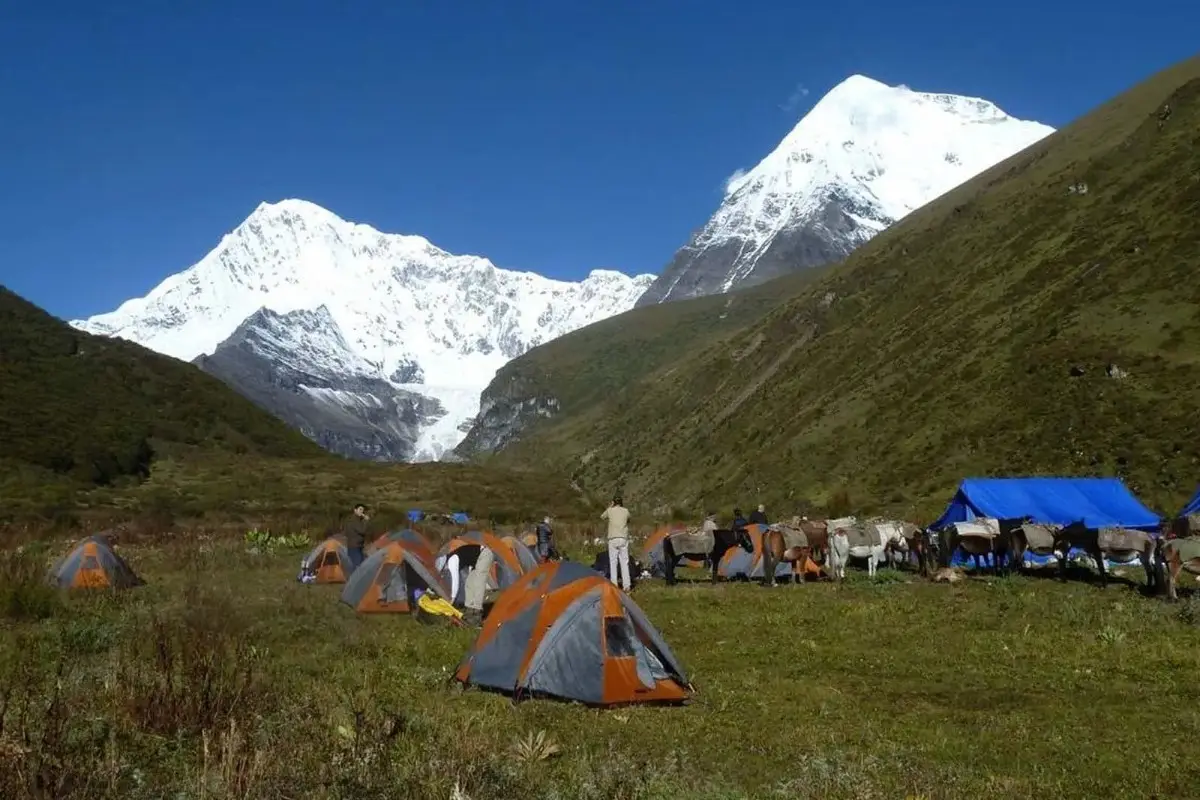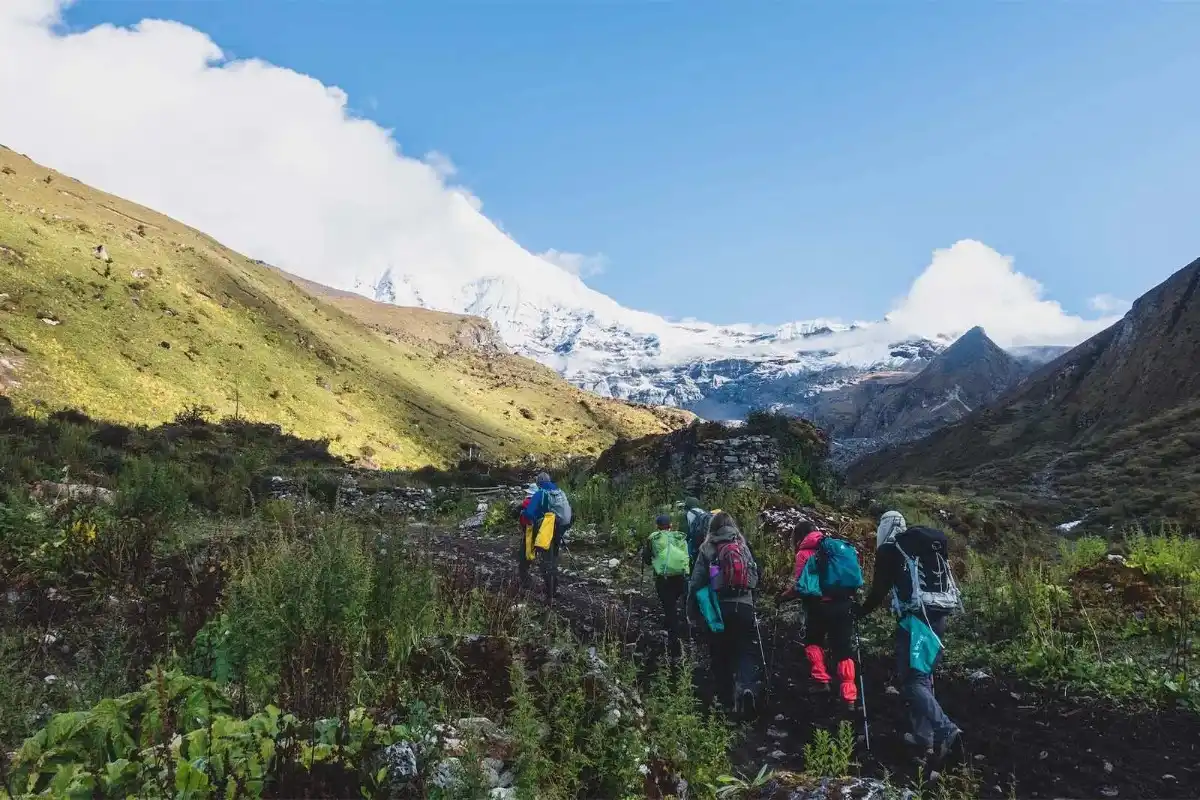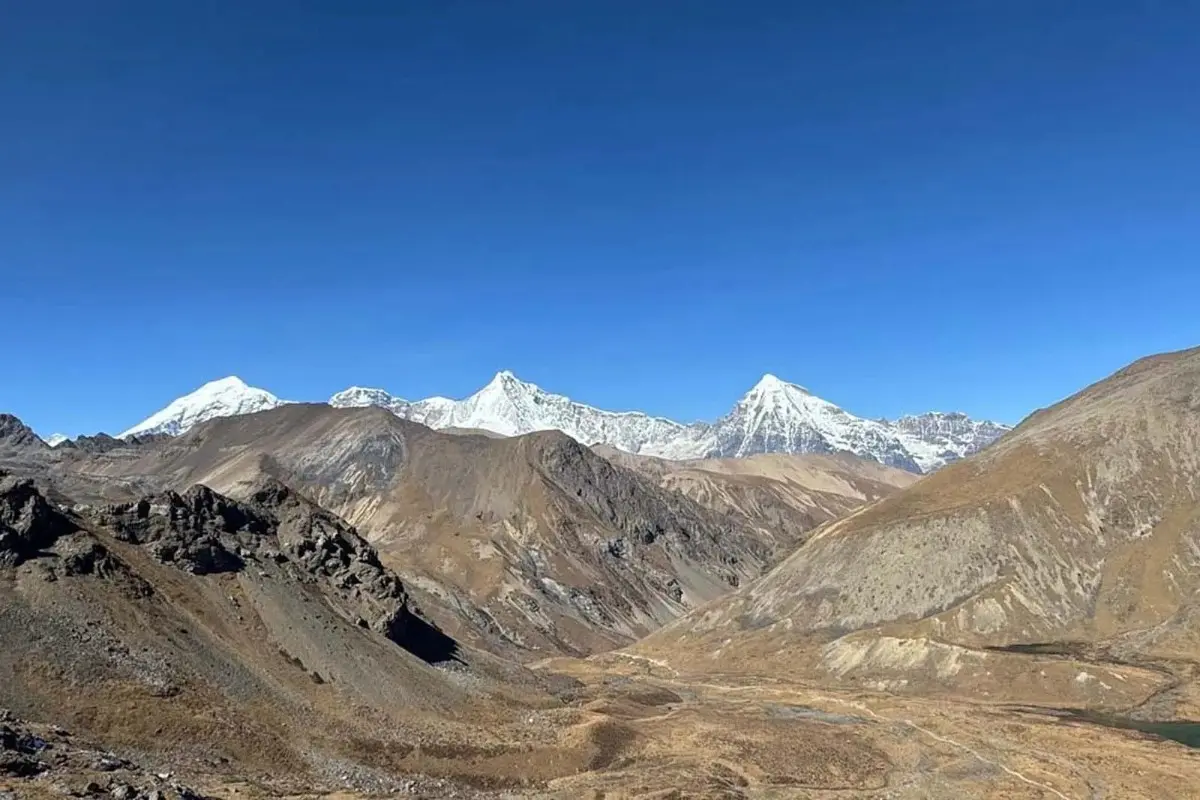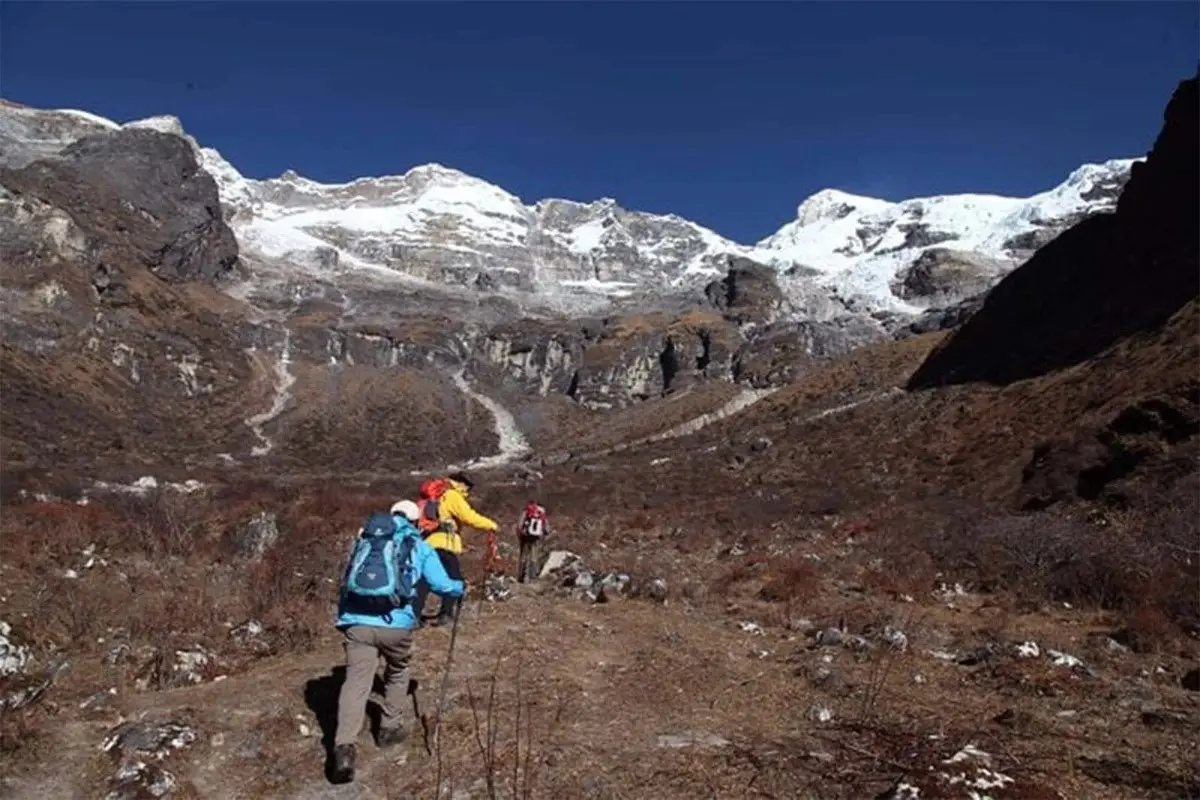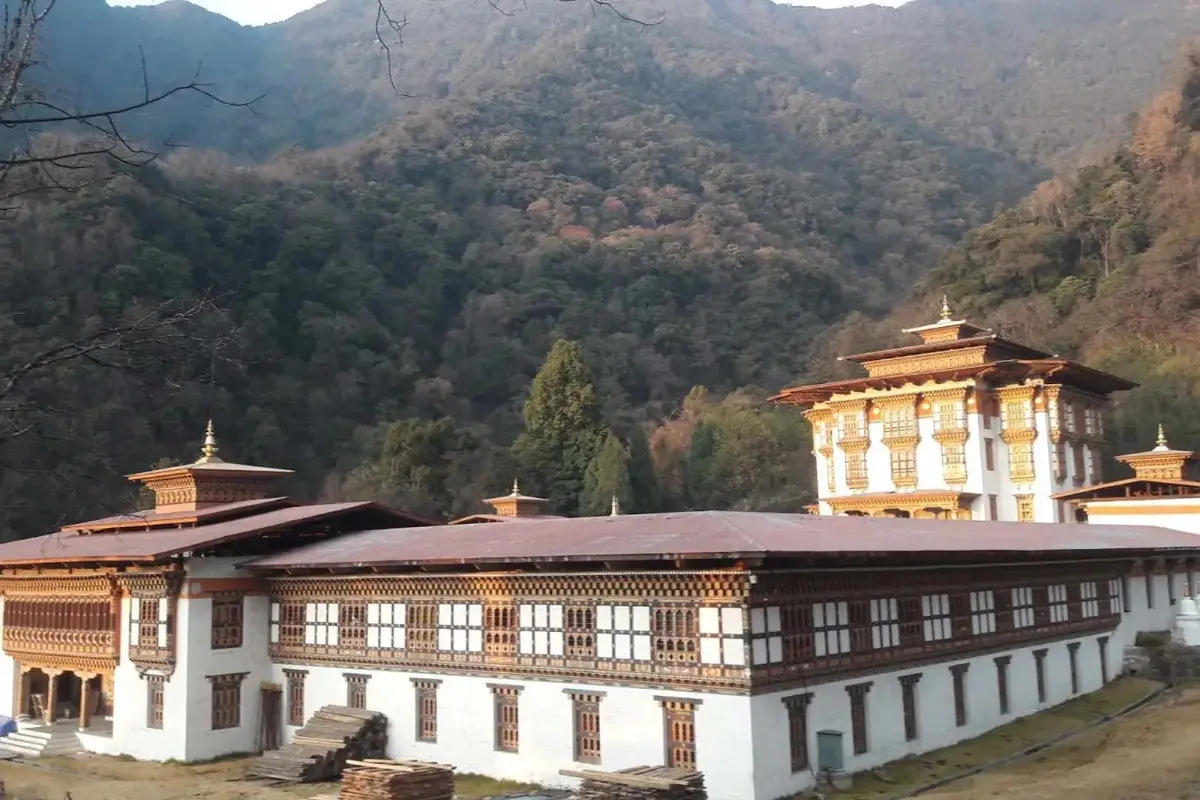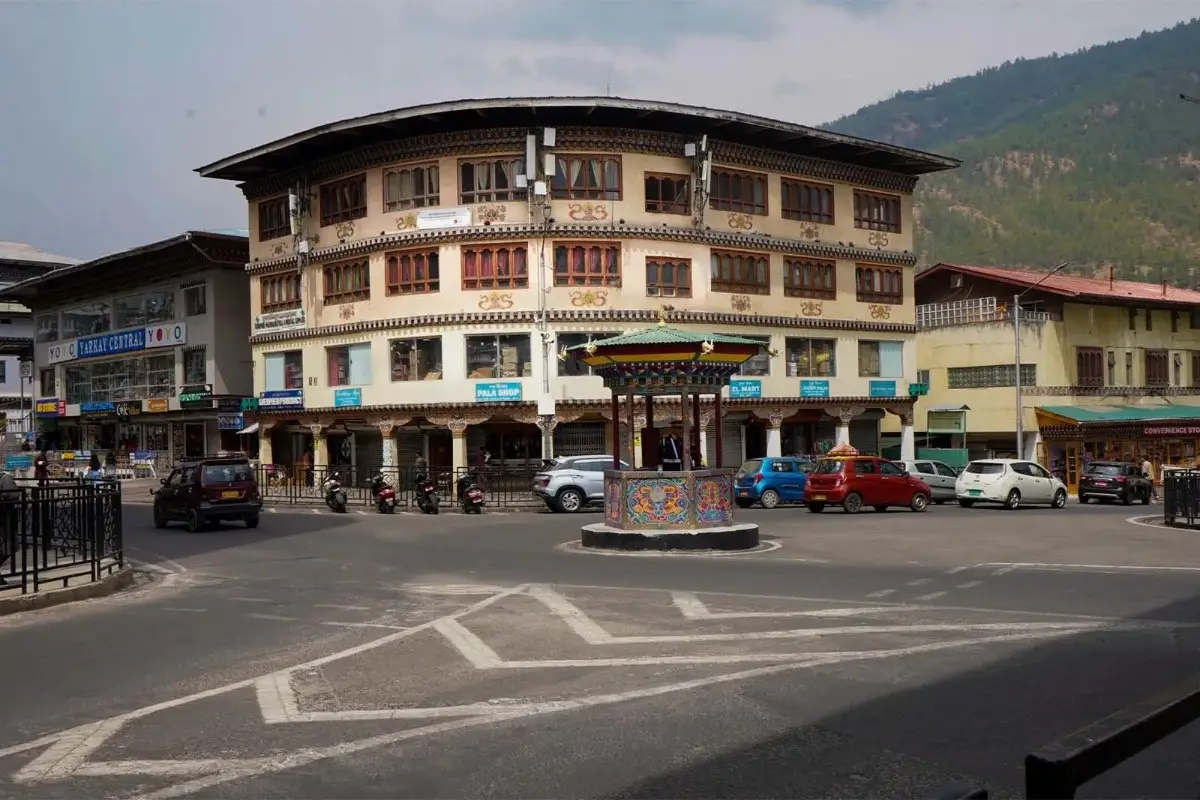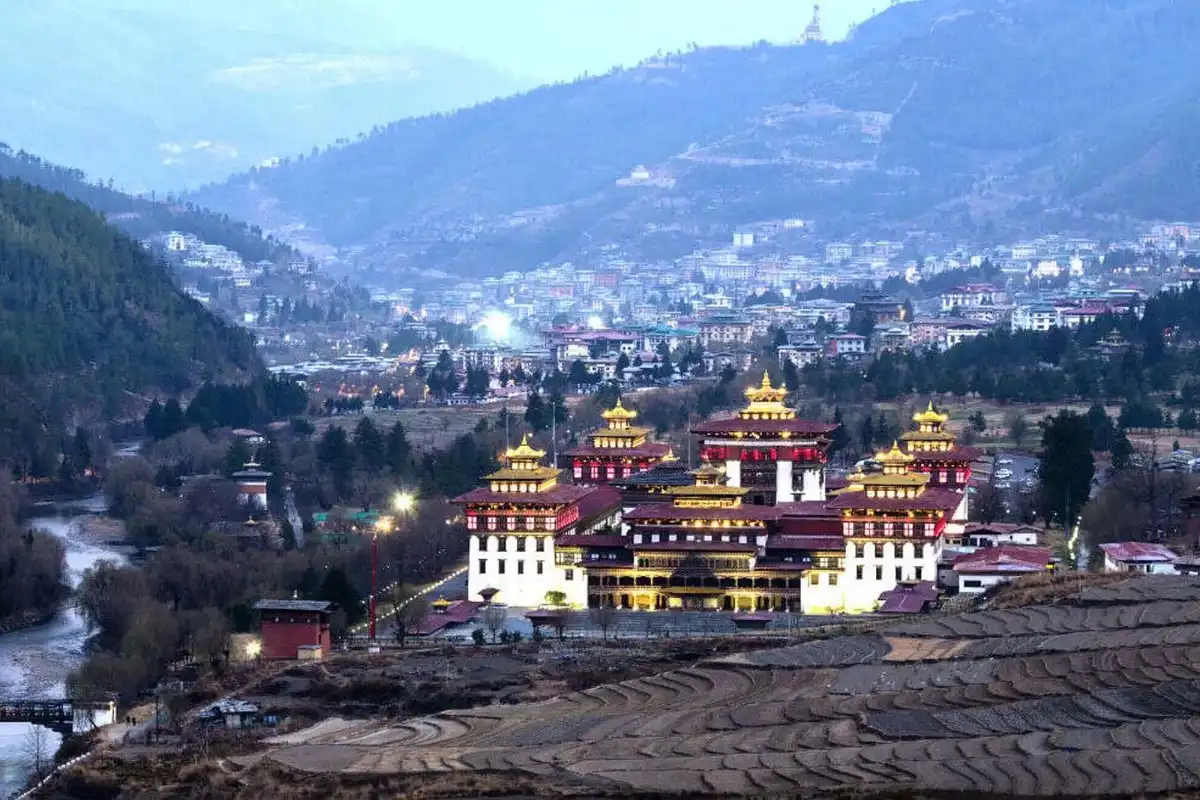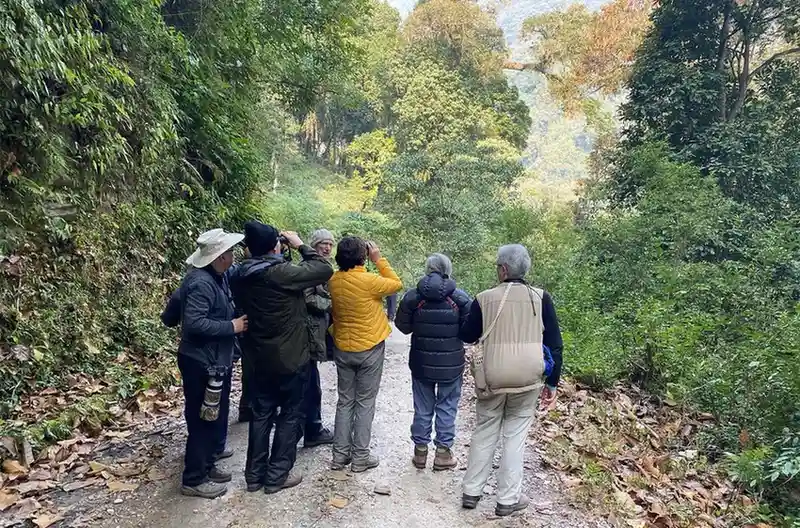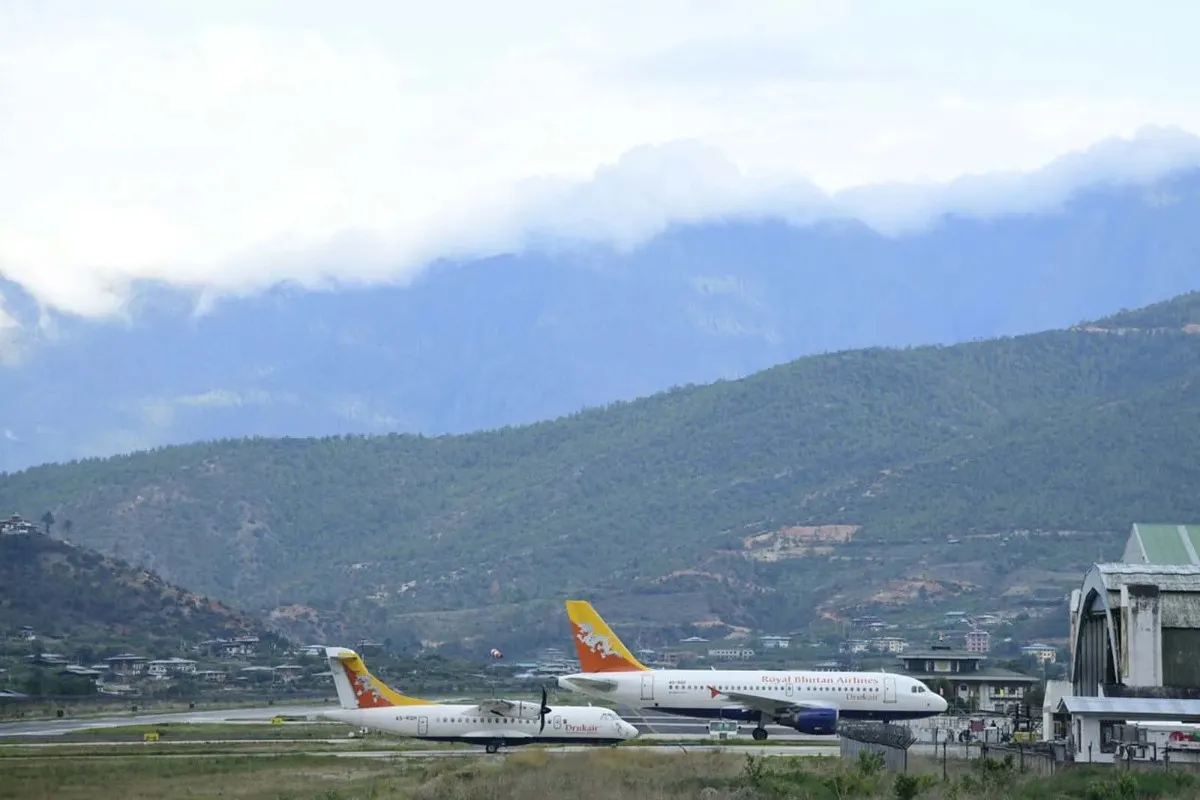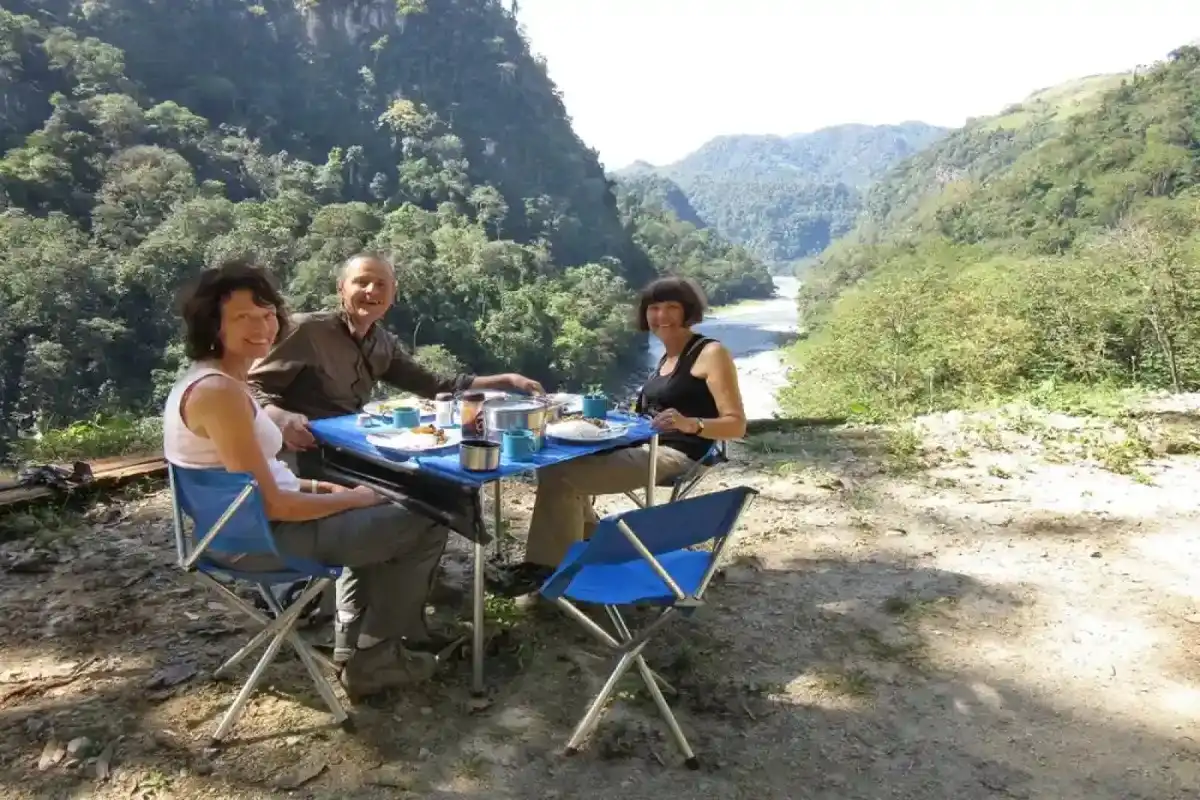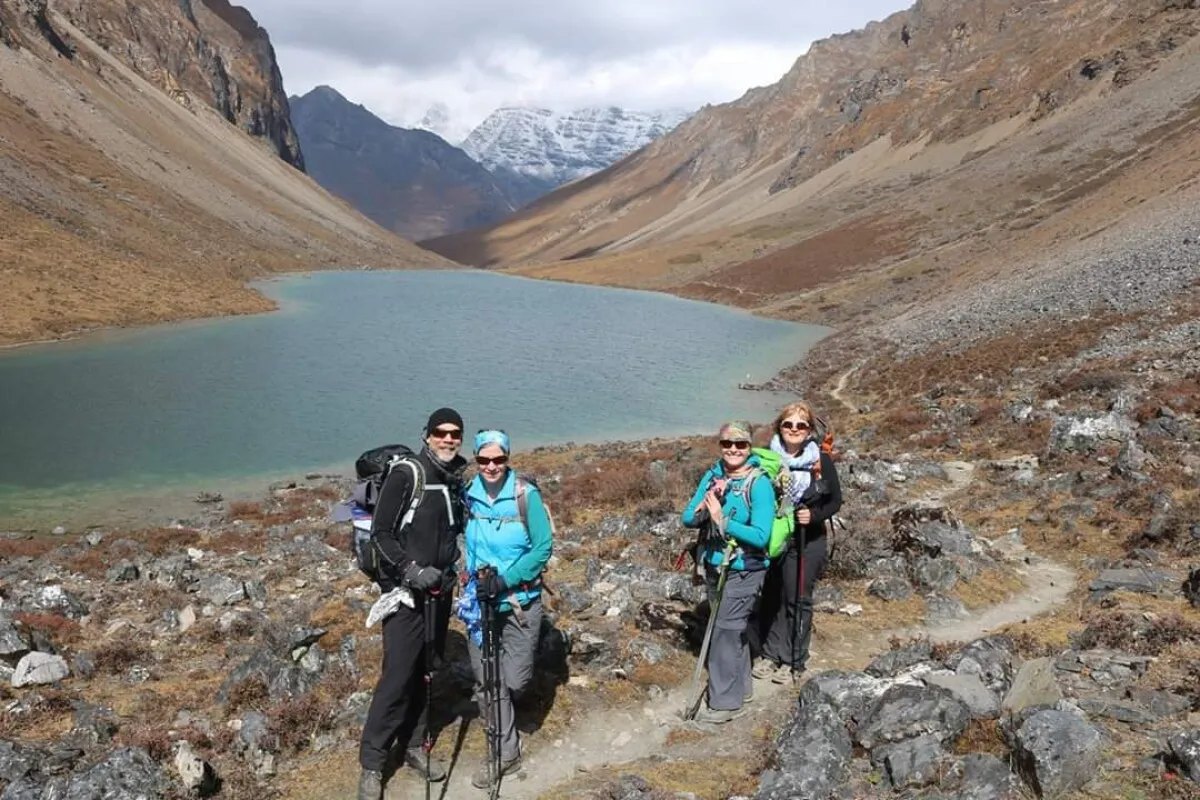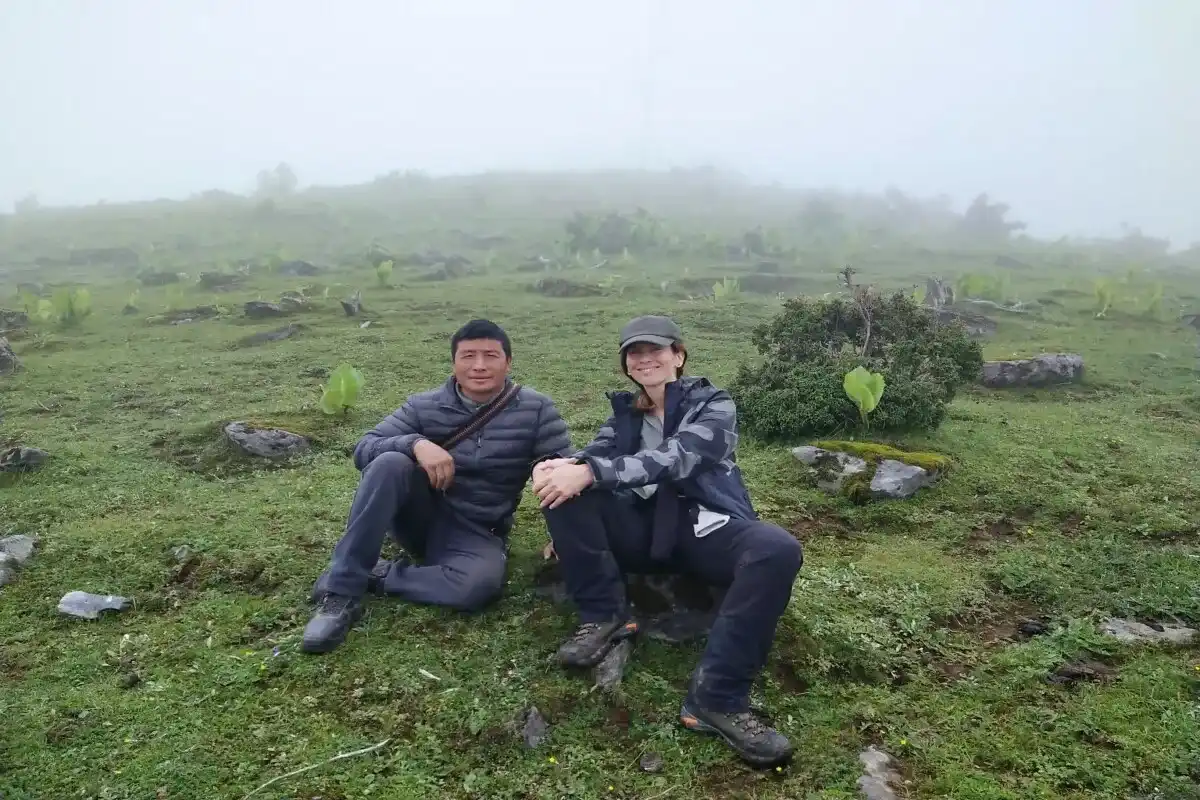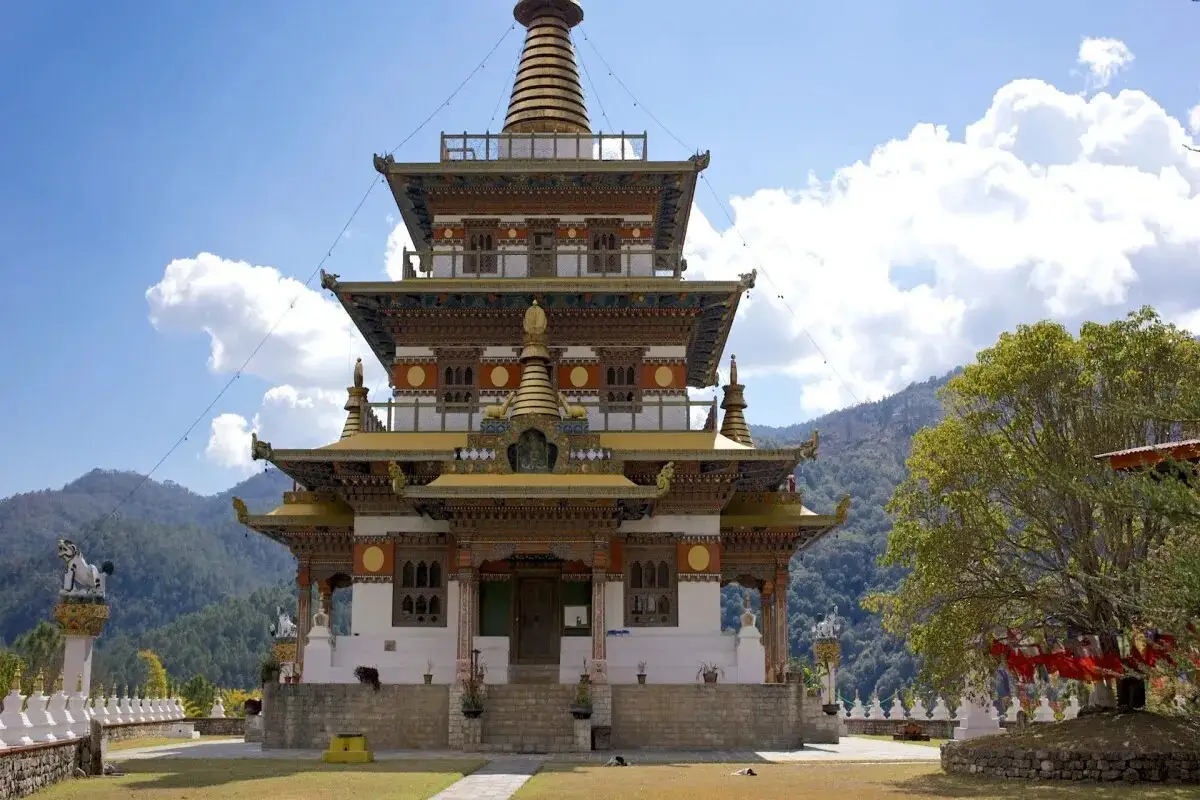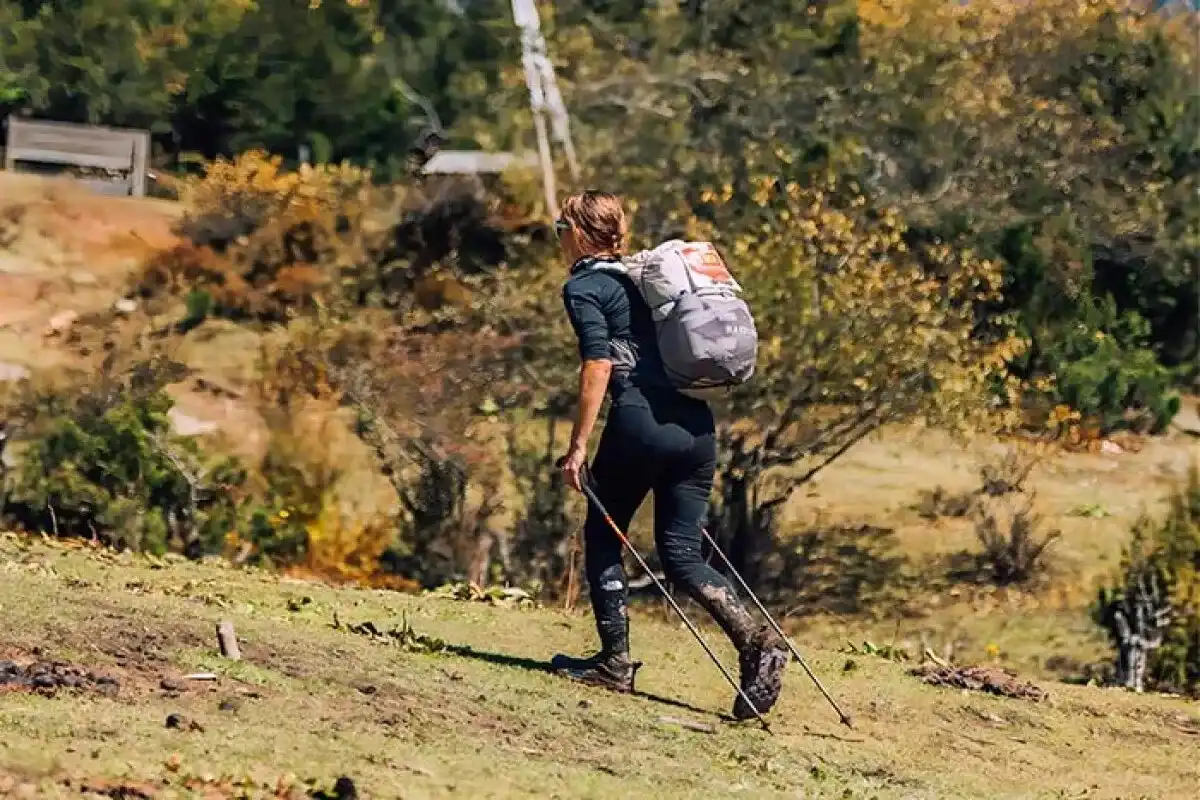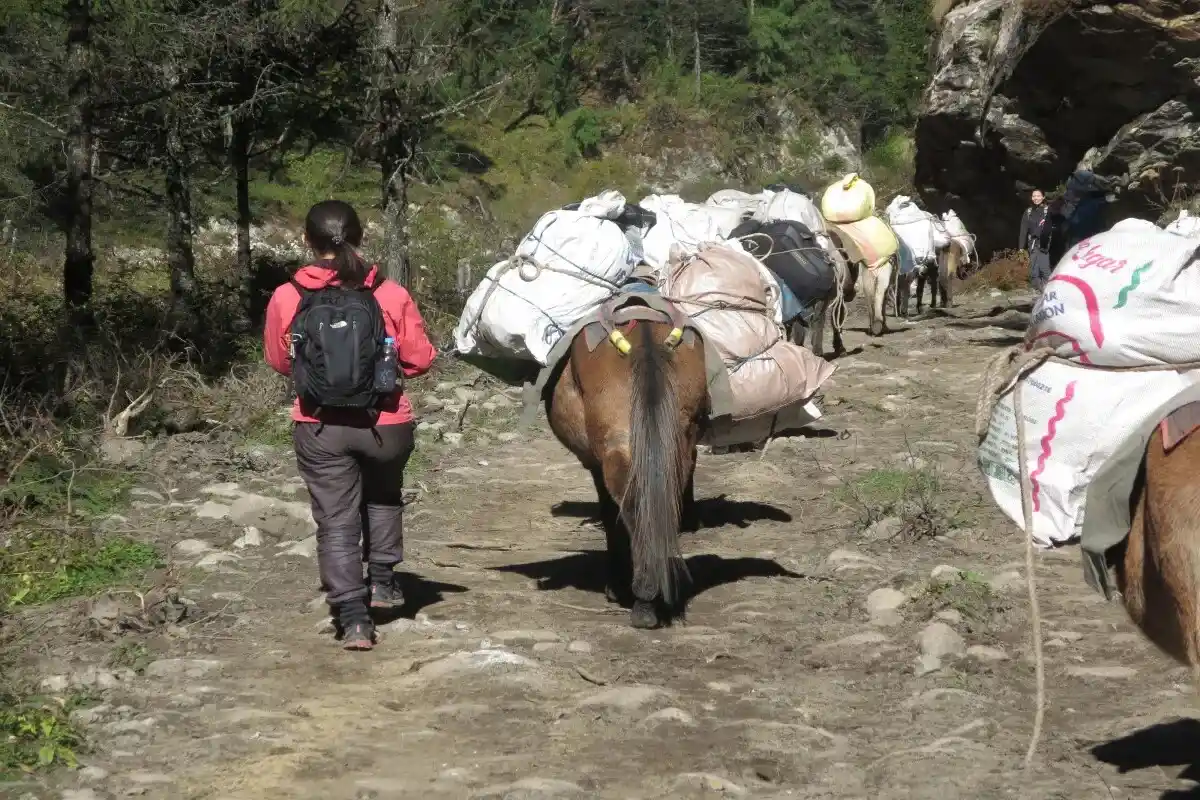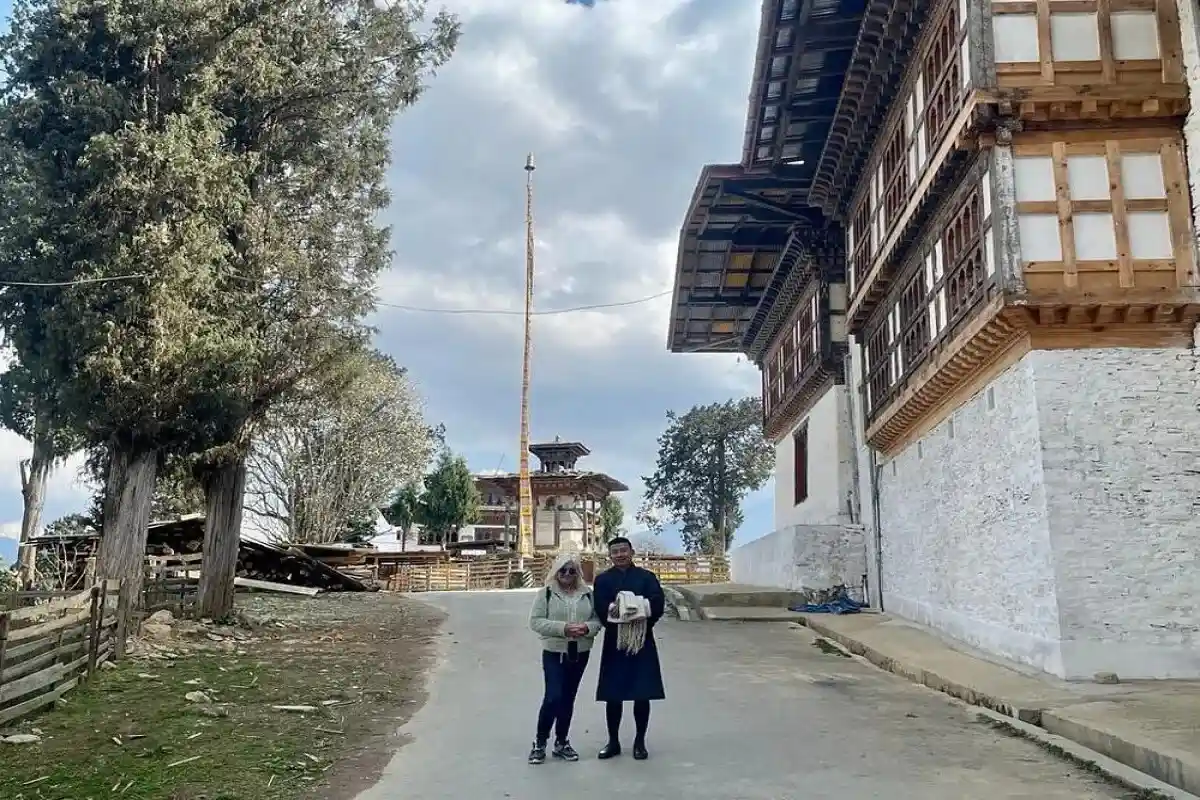Jomolhari Trek - 10 Days
The Jomolhari Trek is one of the great and calm treks. It is easy to witness mountain passes, green scenery, and beautiful mountain landscapes within a short period of trek. Mount Jomolhari is a holy mountain.
Highlights
- Exploring Bhutan culture and traditions
- Sightseeing in Paro Valley
- Hiking through different landscapes
- Crossing different high passes
- Exploring flora and fauna
- Watching a panoramic view
- Crossing several bridges
Trip Overview
Throughout the journey, you will pass through peaceful villages and agricultural lands, forests, and expansive meadows where residents keep their yaks. Throughout the journey, you observe several vibrant flowers, species of birds, wildlife, and blue sheep. Beautiful mountain rivers teeming with fish will also be observed. The journey gives a stunning view of the mountains.
The trip begins in Paro and includes stops at well-known locations like Taktsang Monastery. The route ends in Dodena with a drive to Thimphu after passing over two high passes, Yale La and Nye La. This expedition is optimal during autumn or springtime and features comfortable tented accommodations along with assistance from a skilled staff. We may organize a trek according to what you prefer.
The best time to visit the Jomolhari Trek.
You can trek the Jomolhari all year round. To enjoy fully, Spring and fall are the optimal times. The spring is pleasant with cold evenings and sunny days. Wildflowers and various flora adorn the trails. Autumn is ideal. The mountains look lovely, the air is fresh, and the sky is lovely. The trail is lovely, and the new leaves of the trees make the place more pleasant. Rain pours heavily in summer, and there is fog that limits visibility. The winter season is chilly with snowfall. You should therefore prepare accordingly for these months.
How much does it cost to do the Jomolhari Trek in Bhutan?
The Jomolhari Trek has different prices. The group size, hiking firms, and included services all contribute significantly. Accommodation, food, transportation, hiking permits, government fees, and a guide are all included in our standard packages. You will find different packages with different companies. You can set your package according to you, and we will charge according to it. It will be better if you consult with us on what to include and exclude in the pricing.
How difficult is the Jomolhari Trek?
The Jomolhari Trek is a moderate hike. This trip will bring you close to the mountains. You will be walking at an elevated altitude. The pedestrian pathways are well-maintained. You can suffer from altitude sickness. To get used to the altitude, walk at a constant speed. Although this walk is relatively short, physical fitness will be helpful. Being in optimal physical condition facilitates the ascent to elevated locations. We suggest you do workouts and run 2-3 months before the trek to enhance stamina.
Sunrise from Jomolhari Base Camp
Watching the sun rise from the base camp is an awe-inspiring experience. When the sun reflects on the peak, you will get an excellent view. Early sun is an excellent time for exercise and meditation. Inclement weather can block the sunlight of the sunrise. The base camp's natural beauty and serene environment entice hikers and nature enthusiasts.
Conclusion
As your Jomolhari Trek concludes, the memories will last indefinitely. Upon arriving home, the sound of the river and the scent of fresh mountain air will still be noticeable. Each step you made narrated a tale. Each bend in the route revealed a new aspect. As you return home, reflect on the progress you have made. Not alone in distance, but also in experience. You were involved in something extraordinary. We aspire for your heart to be joyful. We trust your eyes beheld an unforgettable beauty. We aspire for your spirit to feel both cheerful and powerful.
Throughout the journey, you will pass through peaceful villages and agricultural lands, forests, and expansive meadows where residents keep their yaks. Throughout the journey, you observe several vibrant flowers, species of birds, wildlife, and blue sheep. Beautiful mountain rivers teeming with fish will also be observed. The journey gives a stunning view of the mountains.
The trip begins in Paro and includes stops at well-known locations like Taktsang Monastery. The route ends in Dodena with a drive to Thimphu after passing over two high passes, Yale La and Nye La. This expedition is optimal during autumn or springtime and features comfortable tented accommodations along with assistance from a skilled staff. We may organize a trek according to what you prefer.
The best time to visit the Jomolhari Trek.
You can trek the Jomolhari all year round. To enjoy fully, Spring and fall are the optimal times. The spring is pleasant with cold evenings and sunny days. Wildflowers and various flora adorn the trails. Autumn is ideal. The mountains look lovely, the air is fresh, and the sky is lovely. The trail is lovely, and the new leaves of the trees make the place more pleasant. Rain pours heavily in summer, and there is fog that limits visibility. The winter season is chilly with snowfall. You should therefore prepare accordingly for these months.
How much does it cost to do the Jomolhari Trek in Bhutan?
The Jomolhari Trek has different prices. The group size, hiking firms, and included services all contribute significantly. Accommodation, food, transportation, hiking permits, government fees, and a guide are all included in our standard packages. You will find different packages with different companies. You can set your package according to you, and we will charge according to it. It will be better if you consult with us on what to include and exclude in the pricing.
How difficult is the Jomolhari Trek?
The Jomolhari Trek is a moderate hike. This trip will bring you close to the mountains. You will be walking at an elevated altitude. The pedestrian pathways are well-maintained. You can suffer from altitude sickness. To get used to the altitude, walk at a constant speed. Although this walk is relatively short, physical fitness will be helpful. Being in optimal physical condition facilitates the ascent to elevated locations. We suggest you do workouts and run 2-3 months before the trek to enhance stamina.
Sunrise from Jomolhari Base Camp
Watching the sun rise from the base camp is an awe-inspiring experience. When the sun reflects on the peak, you will get an excellent view. Early sun is an excellent time for exercise and meditation. Inclement weather can block the sunlight of the sunrise. The base camp's natural beauty and serene environment entice hikers and nature enthusiasts.
Conclusion
As your Jomolhari Trek concludes, the memories will last indefinitely. Upon arriving home, the sound of the river and the scent of fresh mountain air will still be noticeable. Each step you made narrated a tale. Each bend in the route revealed a new aspect. As you return home, reflect on the progress you have made. Not alone in distance, but also in experience. You were involved in something extraordinary. We aspire for your heart to be joyful. We trust your eyes beheld an unforgettable beauty. We aspire for your spirit to feel both cheerful and powerful.
Short Itinerary
Arrival in Paro, check in at the hotel, tour around the valley, and stay in Paro.
Drive from Paro to Drukgyel, explore the fort, and trek to Shana.
Hike from Shana to Soi Thangkha and stay in a tent for camping.
Hike from Soi Thangkha to Jangothang, followed by camping for the night.
Acclimatization at Jomolhari Base Camp to get used to the changing weather.
Hike from the Jangothang to Nyeli la, descend to Lingshi, and stay there in a tent.
Hike from Lingshi Mo chhu, ascend to Yeli la, and hike to Shodu campsite.
Walk along the Thimpu chhu river from Shodu to Barshong.
Trek from Barshong to Dodena, followed by a ride to Thimphu.
Return from Thimpu to your hotel and prepare for departure.
Price Includes
- Pick-up and drop-off services
We provide a pick-up service from the airport to the hotel on your arrival day and from the hotel to the airport on the departure day.
- Lunch, Breakfast, and Dinner
All meals during the trek will be provided by the company. However, personal food items like coffee, tea, cold drinks, etc, are not included in the package.
- A guide proficient in English
A certified, English-speaking guide will accompany you throughout the trip. The guide will offer information about the trail, culture, nature, and history, and ensure your safety and a smooth experience.
- Comfortable SUV vehicle
A private SUV will be used for road travel before or after the trek. These vehicles are ideal for Bhutan’s hilly terrain and provide a comfortable ride.
- All types of entry costs
This covers all permit fees, monument entrance fees, park fees, and any other official charges required for trekking or sightseeing activities during the tour.
- Professional Drive
We ensure a safe and smooth drive during your tour. We have licensed and experienced drivers for that.
- Sleeping bag and tent
Quality sleeping bags and tents are provided for your comfort and warmth during the camping nights on the trek. So, you don’t have to worry about buying a new one.
- Farewell dinner
A special farewell meal, typically arranged in a traditional restaurant, is offered at the end of the tour to celebrate the journey and thank the participants.
- Evening Tea/coffee with snacks
Each evening, you’ll be served tea or coffee along with light snacks like biscuits and popcorn.
- Drinking Water
Safe and clean drinking water is provided throughout the trek.
- Pick-up and drop-off services
We provide a pick-up service from the airport to the hotel on your arrival day and from the hotel to the airport on the departure day.
- Lunch, Breakfast, and Dinner
All meals during the trek will be provided by the company. However, personal food items like coffee, tea, cold drinks, etc, are not included in the package.
- A guide proficient in English
A certified, English-speaking guide will accompany you throughout the trip. The guide will offer information about the trail, culture, nature, and history, and ensure your safety and a smooth experience.
- Comfortable SUV vehicle
A private SUV will be used for road travel before or after the trek. These vehicles are ideal for Bhutan’s hilly terrain and provide a comfortable ride.
- All types of entry costs
This covers all permit fees, monument entrance fees, park fees, and any other official charges required for trekking or sightseeing activities during the tour.
- Professional Drive
We ensure a safe and smooth drive during your tour. We have licensed and experienced drivers for that.
- Sleeping bag and tent
Quality sleeping bags and tents are provided for your comfort and warmth during the camping nights on the trek. So, you don’t have to worry about buying a new one.
- Farewell dinner
A special farewell meal, typically arranged in a traditional restaurant, is offered at the end of the tour to celebrate the journey and thank the participants.
- Evening Tea/coffee with snacks
Each evening, you’ll be served tea or coffee along with light snacks like biscuits and popcorn.
- Drinking Water
Safe and clean drinking water is provided throughout the trek.
Price Excludes
- International Airfare
- Visa Charges and Insurance
- Individual expenditures
- Additional-day lodging
- Laundry and telephone expenses
- Tips for the guide and the porter
- International Airfare
- Visa Charges and Insurance
- Individual expenditures
- Additional-day lodging
- Laundry and telephone expenses
- Tips for the guide and the porter
Jomolhari Trek Itinerary
You will land today at Paro Airport. A guide will be waiting for your arrival. After meeting the guide, they will escort you to the hotel. Once you reach the hotel, you can take some rest. After resting for an hour or so, you can take a short walk through Paro town. You may find stores, cafés, and local markets here.
You will spend the afternoon at Paro Rinpung Dzong. Here, you can see the fort of the Bhutanese architectural style. After that, you can visit the museum. After exploring these places, you can visit our office. Here, you can plan the itinerary with your guide. Afterwards, you will return to your lodgings. You will be staying at Paro for the night.
You will begin your day early in the morning. You will have a short ride to Drukgyel Dzong. After reaching the Dzong, you will explore the fort. Here, you can spend some time and eat breakfast. After that, you will begin your hike. You will walk along the Paro River. After walking for some hours, you will climb uphill. On the path, you will cross a narrow area with a few farms and fields. You’ll walk through the quiet countryside.
After walking for several hours, you will reach Gunitsawa. Here you will see the army camp's checkpoint. Then, you will walk on a feeder road until you reach an army post. After an hour, you will reach Shana. Once you reach the Shana, the view will amaze you. You will reside in the tent tonight.
Today, the journey will be long and beautiful. You will begin your hike from Shana and walk along the bank of the river. After a few hours of trekking, you will ascend uphill. You will traverse a woodland en route. You can see different kinds of trees in the forest. While hiking in the forest, you will receive clean air. On the path, most of the time, you will hear the sound of the river.
Following many hours of trekking, Mount Jomolhari will come into view. At this point, you can pause for some time and take some photos. From this point, as you move forward, you will cross the wooden bridges. After crossing the bridge, you will climb. Some parts of the path may be rough, so you should hike carefully.
After a long journey, you will reach Soi Thangkha. Upon your arrival, you will observe an expansive meadow. In the meadow, you can observe the little stone shelter. Besides the shelter, you will put your tent. You will spend the night in a tented camp at Soi Thangkha.
You will begin your trek after having tea at Soi Thangkha. Most of the time, you will walk along the river. After several hours of trekking, you will reach the Army checkpoint. From the checkpoint, the valley expands. From here, the path gets wider. You will see better sights as you move on.
As you move forward, you will climb more. From the path, you will view snowy mountains. Yaks will be seen grazing along the path. You will feel cool. You can also notice yak herders looking after their animals. You have to walk at a steady pace and rest on the path because you will gain elevation.
After a lengthy hike, you will arrive at Jangothang. Once you reach, you will be encircled by mountains. Then, you will put your tent below the old fort. You will stay here for the night. It’s the perfect place to stay for the night after a long day of hiking.
You will rest at Jomolhari Base Camp today and get acclimated to the weather. You will get up early to see the sunrise. The reflection of sunlight on a snowy mountain creates a breathtaking vista. After that, you will enjoy the black tea with a pretty view. Here, you can relax and inhale the crisp air.
Following lunch, you could speak with your guide about subsequent activities. You can explore the nearby places. You can investigate the local plant and wildlife. Following that, you may explore Sopu Lake and the Nye La Pass. Here, you can capture some pictures and enjoy the view. After that, you will go back to your camp. Then, you can set the campfire and enjoy your food.
The journey today takes you from Jangothang to Lingshi. You will begin your trek by climbing upwards. On the path, you will traverse through different landscapes. You can watch the farmlands and different types of birds. Upon ascending for a while, you will arrive at Nyeli La. Here, you may halt and contemplate the extraordinary.
From this point, you have to descend. Upon descent, in clear weather, a prominent fort becomes visible. In the northern region, you may observe magnificent glaciers. After walking for some time, you will reach the top of the ridge. Thereafter, you will begin your expedition in the forest. Upon descending for many hours through the forest, you will arrive at the settlement of Lingshi. Tonight, you will camp at Lingshi in a tent.
You’ll have to walk a long way today. You will begin the trek before sunrise. From Lingshi, you will climb out of the valley as your first step. You will traverse a ridge. You had been going northeast until now. Today, you take a turn toward the south. Following many hours of hiking, you will arrive at the Mo Chhu valley.
After traversing the Mo Chhu valley for a period, you must ascend. Then, climbing for hours, you will reach Yeli La Pass. You can pause and appreciate the view here. When the weather is nice and clear, you can admire some great mountains from here. After this, the path will take you down for a long period.
You will encounter a step and a narrow way. You will into the Wang Chhu valley. After hiking for several hours, you will reach the campsite near Shodu village. You will sleep in a tent at the Shodu Camp.
Today, you'll be hiking along the Thimphu Chu river. You will traverse a deep woodland along the path. In the forest, you can see various herbs and shrubs. Along the route, you will hear the river, which makes your hike enjoyable. While walking, you will observe breathtaking views of high cliffs and large rocks close to the river.
After a descent for some time, you will ascend. Upon many hours of ascent, you will arrive at Barshong Dzong. Here, you can see a broken fort and old stone walls. You can stop here and capture some pictures. In this location, you will camp under tents and relax in the fresh mountain air.
You are starting your walk today at Barshong. You will trek along the Thimphu Chu river trail. At the outset, you will be walking through a thick forest. Going deeper through the forest, the trees will become thinner, and you’ll come to see open, green fields around you. As you move forward, you can notice wide spaces with grass and small flowers. You will ascend from the grasslands to a mountain glade. When you reach the meadow, you can rest a little and admire the scenery.
From this location, as you walk, you will reach a mountain pass. After you cross the pass, you will start heading down to Dodena. Walking for several hours will take you to Dodena. A vehicle will be there at Dodena to pick you up. You will eat your lunch and begin the drive at this juncture. The experience gives you time to unwind and see the scenery change.
Following a brief travel, you will reach Thimphu. Then, you will go to the hotel. We have arranged a farewell dinner for you this evening. You can settle into the cozy hotel after you enjoy your dinner.
Today, you will leave Thimphu and return to your residence. Your guide will accompany you to the airport. You may think back on the most important parts of your journey whenever it's convenient for you. Your guide will accompany you at the airport until your departure time. They will manage your check-in and make your processing smooth. Tashi Delek means goodbye and good luck in the local language, and your guide will say this to you before you part. While your trip is done, the experiences and memories you had will last a lifetime.
Know Before You Travel
-
You can trek the Jomolhari all year round:
Spring and autumn are the best times to trek. The spring is pleasant with cold evenings and sunny days. Wildflowers and various flora adorn the trails. Autumn is ideal. The mountains look lovely, the air is fresh, and the sky is lovely. The trail is lovely, and the new leaves of the trees make the place more pleasant. Rain pours heavily in summer, and there is fog that limits visibility. The winter season is chilly with snowfall. You should therefore prepare accordingly for these months.
Jomolhari-Map
Download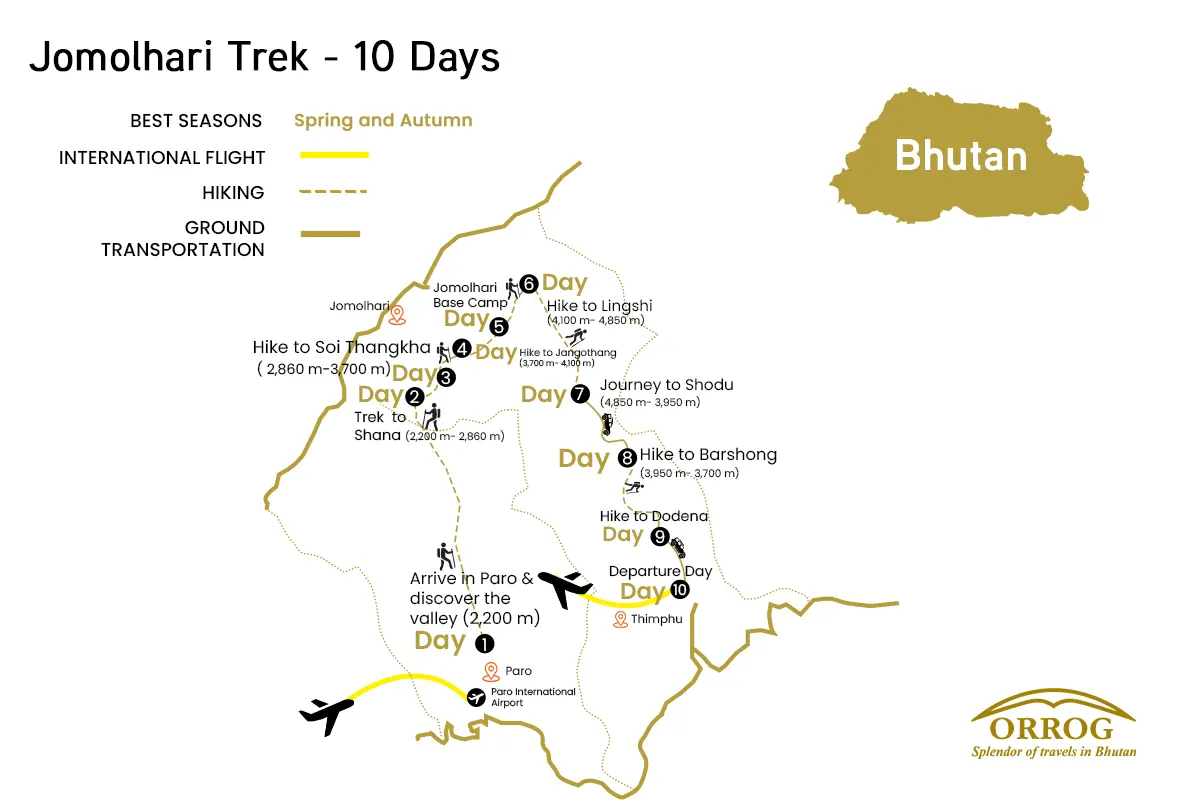
Jomolhari Trek Video
FAQs for Jomolhari Trek
Orrog is one of the certified tour and travel companies in Bhutan. We have conducted several treks with certified guides. We have years of experience. We can plan your trip according to your plan.
The expedition generally lasts around 10 days. We can customize the plan according to your preference.
You can stay an extra day as per your wish. You have to pay for the extra day. We can book the best lodge for you, or you can arrange it on your own. You can book different hotels online.
The high point of the journey is Yeli La Pass, which reaches an elevation of around 4,930 meters. Additional high-altitude crossings comprise Nye La Pass (4,890m).
Proper acclimatization, hydration, and avoidance of overexertion are essential for reducing the risk of altitude sickness. Your trekking guides will arrange rest days to facilitate acclimatization. During the trek, do not consume any type of beverage.
The expedition encompasses a variety of terrains, such as alpine meadows, deep woods, rugged paths, elevated passes, and yak farms.
Indeed, acclimatization is crucial due to the elevated elevations. If you don't take rest, you may suffer from altitude sickness, which guarantees a safer trekking experience.
The optimal trekking seasons are spring (April-May) and fall (September-November). At this time, you will get steady weather, clear visibility, and well-maintained routes.
Foreign trekkers are required to get a Bhutanese visa and a trekking permit. You can obtain this permit by filling out the online form, or we can arrange for you.
Trekkers may see Himalayan blue sheep, takins, yaks, griffons, and the rare snow leopard in high-altitude regions.
Bhutan follows Bhutan Time (BTT), which is GMT +6 hours.
No, Bhutan does not use daylight saving time.
Yes, if your phone has roaming and automatic time settings enabled.
Bhutan is 15 minutes ahead of Nepal and 30 minutes ahead of India.
Both 12-hour and 24-hour formats are commonly used. Clarify with your guide if unsure.
Yes, souvenirs can be bought in Paro or Thimphu before or after the trip.
Some popular souvenirs include hand-woven textiles (kira and gho fabric), prayer flags, thangka (religious scroll) paintings, handmade paper products, traditional masks, and Buddhist artifacts.
You can do some gentle bargaining in local street markets. However, in government-run shops and fixed-price stores, prices are usually non-negotiable.
You need a visa and all necessary permits for your trip. These documents can not be received on the day of your arrival, so they must be processed before coming here. After you book a trip with us, we will manage these papers for you. Your Bhutan visa is arranged by Orrog as part of the package.
The main way to come to Bhutan is through Paro International Airport, which is well-connected to cities like Bangkok, Delhi, Kathmandu, and Singapore. Most people arrive by air, but if you plan to come via road, you can enter through Phuentsholing, located on the southern border with India, which is the most commonly used entry point.
It is recommended to apply for the visa at least 20 days before your planned departure date so that there is enough time for processing your Bhutan visa, finalizing your itinerary, and arranging your guides and transportation. Although visa processing itself is relatively fast once payment is received, early preparation helps avoid delays and ensures availability, especially during peak seasons (spring and autumn).
You don’t require a passport-size photo for the visa, but it is wise to carry at least 2–4 recent passport-sized photographs during your trip. These may be needed for local permits, registration, or when applying for a local SIM card upon arrival in Bhutan.
Yes, you can lengthen your stay in Bhutan either before or after your trip. Bhutan’s tourism model requires visitors to pay a Sustainable Development Fee (SDF) and a daily package cost, so any extra days will involve additional charges. Extensions are a great opportunity to explore cultural sites in Paro, Thimphu, or even add another short trip or day hike.
Yes, Bhutan requires full tour payment in advance before your visa can be processed and issued. The government of Bhutan regulates this policy to ensure that all travel arrangements are confirmed through a licensed Bhutanese tour operator. We are a licensed tour operator that ensures you have everything you need for a trouble-free trip.
Orrog offers packages with the customer in mind that guarantee a hassle-free travel experience.
Any personal expenses are not covered in the package like:
- Tips for your guide and other staff
- Bottled drinks and snacks(personal expense)
- Souvenirs or local crafts
Credit cards are easily accepted in major cities like Paro and Thimphu. But in remote areas, you may not have access to a card or an ATM. So, it is best to carry some cash before heading for the trip.
Tipping is not mandatory, but it is a widely appreciated gesture and a customary way to show gratitude for good service. The tipping guideline would be to give USD 5-10 per day as a tip for the guides and other staff.
Paro International Airport is the only international airport in Bhutan. It is well connected by flights from cities like Bangkok, Delhi, Kathmandu, and Singapore.
Yes, airport pick-up and drop-off are included in the package. We will have your guide and driver meet you at the airport and transport you to your hotel.
While Bhutan's roads are mostly paved, some parts are narrow, winding, and occasionally affected by weather. However, we ensure your travel is safe, well-maintained, and driven by an experienced professional throughout the journey.
The Bhutanese Ngultrum is used in Bhutan. All local transactions during the trip will be in BTN.
US Dollars (USD) are generally accepted at larger hotels, souvenir shops, and tour operators, particularly in Paro and Thimphu. However, it’s advisable to convert your currency to BTN for general purchases in rural areas. Other currencies like the Euro or the Pound are not commonly accepted directly.
No, credit or debit cards are not accepted on the trip, as it takes you through remote regions with no banking or electronic payment access. All trip-related payments like accommodation, meals, permits, etc, are paid in advance.
You can exchange foreign currency at the Paro International Airport, at banks, or through licensed money changers in cities like Thimphu and Paro. It's best to exchange enough cash before heading out on the trip.
The national language is Dzongkha, but many Bhutanese also speak English. If you speak English and are worried about communicating with the local people, you will have your guide as a translator.
yes, all licensed tour guides in Bhutan are required to speak fluent English. Many are also trained in other languages such as German, Japanese, or French. Communication during the trip will be smooth and clear in English.
Most signboards, tourist maps, and information brochures are written in English, especially in tourist destinations like Paro, Thimphu, and trailheads. Directional signs along routes are often labeled in both Dzongkha and English.
No, learning Dzongkha is not at all needed for the trip, but knowing a few basic words like "Kuzu zangpo la" (Hello) or "Kadrinche la" (Thank you) is a good way to interact with the locals.
Language barriers are minimal, as your guide will handle all communication with locals and support staff. Your guide will translate for you during your interaction with the locals.
To greet people, you can greet with locals “Kuzu zangpo la” (Hello) by performing a slight bow. Most common greetings include physical greetings, such as shaking hands less visible, especially in rural areas.
Yes, but remember to seek permission, especially when taking photos of monks, locals, or temples. Please note that clicking photos is not allowed at most religious sites.
Visitors should dress modestly and respectfully. This means:
- Covering shoulders and knees
- Removing hats and sunglasses
- Not wearing shorts or sleeveless tops
This applies to both men and women.
Yes, Bhutanese society is deeply rooted in Buddhism and tradition. Here are some key taboos:
- Do not point your feet at people or sacred objects
- Never touch anyone on the head, as it is considered sacred
- Walk clockwise around temples, stupas, and religious monuments
- Avoid public displays of affection
While gifts are not expected, they may be accepted graciously if given with respect. It is advisable to consult with the guide before giving out anything.
Yes, you can easily purchase a SIM card upon arrival in Bhutan. We will assist you with the process, and you'll need a passport copy and a passport-sized photo.
No, internet access is not available during the trip. However, Wi-Fi is available in hotels in Paro and Thimphu before and after the trip.
Yes, snow is quite likely, especially at higher elevations, which are above 4,800 meters. If you trek during late autumn (October–November) or early spring (March–April), you may encounter snowfall. During the peak of spring (April–May) and autumn (September–early October), trails are usually clear, although sudden weather changes in the mountains can still bring unexpected snow showers. You should always be prepared for cold conditions and potential snowfall, regardless of the season.
No, Treks are not accessible throughout the year. The trail is generally closed during the winter(December- February) due to heavy snowfall that makes high mountain passes impassable and increases the risk of avalanches and extreme cold.
Since the weather can be unpredictable and temperatures can vary drastically, layered clothing is essential. You should pack:
- Base layers (thermal tops and bottoms)
- Insulating layers like fleece or down jackets
- Waterproof and windproof outer layers
- Warm hats, gloves, and neck gaiters for freezing conditions
- Moisture-wicking socks and weatherproof trekking boots
The weather is clear with mild daytime temperatures during spring and autumn. But you will be travelling in high altitudes, so it is necessary to carry enough clothing because you will encounter lower temperatures. The nights are freezing cold at high altitudes. So, pack accordingly.
The Jomolhari Trek is classified as moderate to strenuous, basically due to its location, the long trail, and several days of camping. The track, although not tough, is more suited to people who have earlier hiking or trekking experience. Beginners with good fitness and determination can still complete the trek, but we recommend undertaking some pre-trip training, such as having a long walk or doing some cardio exercises
This trip is mainly for people aged between 12 and 65. But if you are physically fit and have the willpower to complete this trek, you can complete this trek because we will be there to help you in case of any problem.
A Medical certificate is not mandatory, but a health check-up is advised. Since the trek reaches altitudes over 4,800 meters (15,750 feet), you can have a normal checkup before the trek to make sure that you have no ongoing issues.
Yes, your children can join the trek if they are in good physical condition, which requires walking for a few hours every day. They should have parental guidance during the trek.
Yes, senior citizens can participate, given that they are fit to complete this trek. A visit to the Doctor is strongly advised, and seniors should engage in pre-trek training to improve stamina and cardiovascular health.
During this Trek, you will stay in tented camps at remote, scenic campsites along the trail. These camps are fully supported and managed by us. Before and after the trek, you will stay in comfortable hotels or guesthouses in Paro and Thimphu. All accommodations are arranged by us as part of your package.
Yes, all campsites are carefully chosen, keeping safety, cleanliness, and hygiene in mind. Orrog follows strict sanitation practices, including setting up toilet tents, safe waste disposal, and clean food preparation areas. You’ll also be accompanied by well-trained staff to ensure your safety during the trip.
Yes, we provide a high-quality sleeping bag in the package, which is suitable for sub-zero temperatures of the high-altitude regions. However, you can bring your sleeping bag if you prefer additional comfort or hygiene.
Yes, hot water for drinking is available at camps, but not hot water for showers. You can carry biodegradable wet wipes for convenience.
Each campsite is equipped with portable toilet tents or simple pit latrines, maintained by the support team to ensure cleanliness and privacy. While they are basic, they are safe, hygienic, and environmentally conscious. It is advisable to carry your toilet paper, hand sanitizer, and eco-friendly toiletries to maintain hygiene during the trek.
If you experience symptoms such as headache, nausea, dizziness, or fatigue, your guide will have you rest, hydrate, and monitor your condition closely. If symptoms worsen, you will be taken to a lower altitude immediately, which is the most effective treatment. All treks are designed with gradual altitude gain and acclimatization days to minimize the risk.
Yes, emergency helicopter evacuation is available in Bhutan and can be arranged in serious cases such as severe altitude sickness or injury. However, helicopter rescue is costly and not included in standard trek packages, so having travel insurance that covers emergency evacuation is mandatory. Guides and tour operators are trained to handle emergencies efficiently and will contact authorities for evacuation if needed.
This trek is moderate to tough with 6–8 hours of walking per day across rugged terrain and steep trails. The altitude, length, and remote conditions require good physical fitness and preparation.
Yes, emergency helicopter evacuation is available in Bhutan and can be arranged in serious cases such as severe altitude sickness or injury. However, helicopter rescue is costly and not included in standard trek packages, so having travel insurance that covers emergency evacuation is mandatory. Guides and tour operators are trained to handle emergencies efficiently and will contact authorities for evacuation if needed.
Yes, travel insurance is mandatory for all international travelers visiting Bhutan, especially for those trekking at high altitudes. Your insurance must cover:
- Emergency medical treatment
- High-altitude trekking (above 4,000 meters)
- Helicopter evacuation and return to the home country
- Trip cancellation or delay
Proof of insurance may be requested before your visa is processed. Make sure to read your policy details carefully or consult with your insurance provider before travel.
Yes, travel insurance is mandatory for this trek. Your policy must include coverage for high-altitude trekking (above 4,000 meters), medical emergencies, and helicopter evacuation, as these services can be very costly in remote Bhutanese terrain. Proof of insurance may be required by your tour operator before confirming the trek.
Mobile network coverage is extremely limited along the Trek. While you may get occasional signal in some lower-altitude areas or villages, most of the trail is out of range, especially near the high passes and campsites. It’s best to inform family and friends that you may be offline for several days.
Charging facilities are not available on the trail since the trek passes through remote and non-electrified areas. It is strongly recommended to bring a high-capacity power bank or a solar charger to power essential devices like phones or cameras during the journey.
Yes, you should bring personal gear such as trekking boots, warm and waterproof clothing, gloves, hats, and a sleeping bag. The other necessary items will be managed by us.
Meals are prepared fresh daily by the trek support team and typically include Bhutanese and Tibetan-style dishes like rice, curries, noodles, soups, vegetables, and occasional meat. Tea, coffee, and snacks are also provided. If you have diet restrictions (vegetarian, vegan, gluten-free, etc.), inform your tour operator in advance so arrangements can be made.
Trekking in Bhutan follows strict environmental protocols, including the “Leave No Trace” principle. All trash is collected and carried out by the support team. Trekkers are expected to avoid littering and carry personal non-biodegradable waste, such as snack wrappers or batteries, back to base.
Yes, safe drinking water is provided each day. You are also encouraged to bring a refillable water bottle and, optionally, water purification tablets or a filtration bottle for additional safety and convenience.
Reviews & Ratings
-
Guarantee -
Thimphu,Bhutan -
975+17160228
Ready to Explore Bhutan?
Start your journey today and discover the magic of Bhutan with our expert guides and carefully crafted tours.
Book This Trip
-
No booking or credit card fees -
Best price guarantee -
Full customize trip
Ask a Question
Feel free to ask us anything about this tour. A travel expert will then get back to you as soon as possible
Ready to Explore Bhutan?
Start your journey today and discover the magic of Bhutan with our expert guides and carefully crafted tours.
